Inbox and Environment News: Issue 545
July 3 - 16, 2022: Issue 545
Wanted: Photos Of Flies Feeding On Frogs (For Frog Conservation)
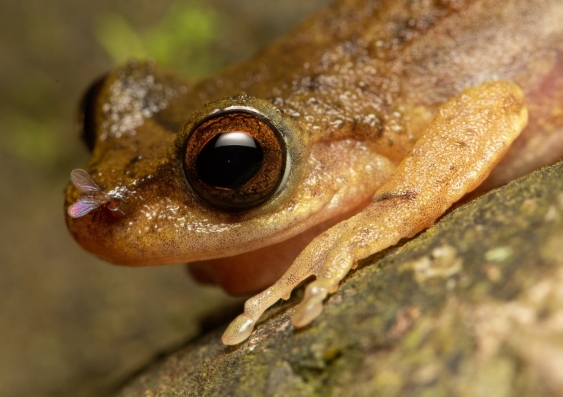
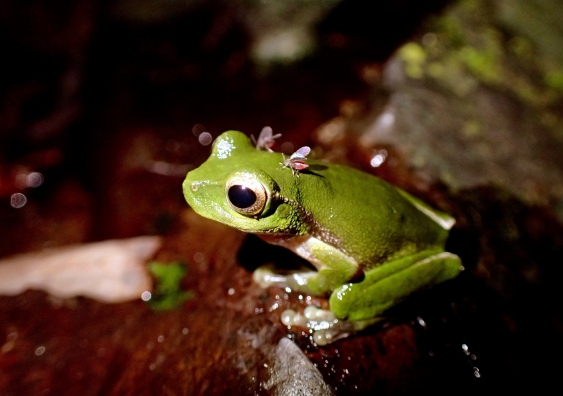
Stop It And Swap It This Plastic Free July
 To mark the beginning of Plastic Free July, the NSW Government is partnering with 17 organisations to help communities around the state stop using single-use plastic.
To mark the beginning of Plastic Free July, the NSW Government is partnering with 17 organisations to help communities around the state stop using single-use plastic.- Girl Guides NSW
- Green Connect
- Green Music Australia
- KU Children's Services
- Meals on Wheels NSW
- Men’s Shed Association
- NSW Environment & Zoo Education Centres
- OzGreen
- Plastic Free July
- Southern Cross University
- Surfing NSW
- TAFE NSW/Addison Road Community Organisation
- Take 3
- The Great Plastic Rescue
- University of New England
- University of Newcastle
- University of Wollongong
County Road Reserve + Nandi Reserve Finalised Designs: Belrose - Frenchs Forest
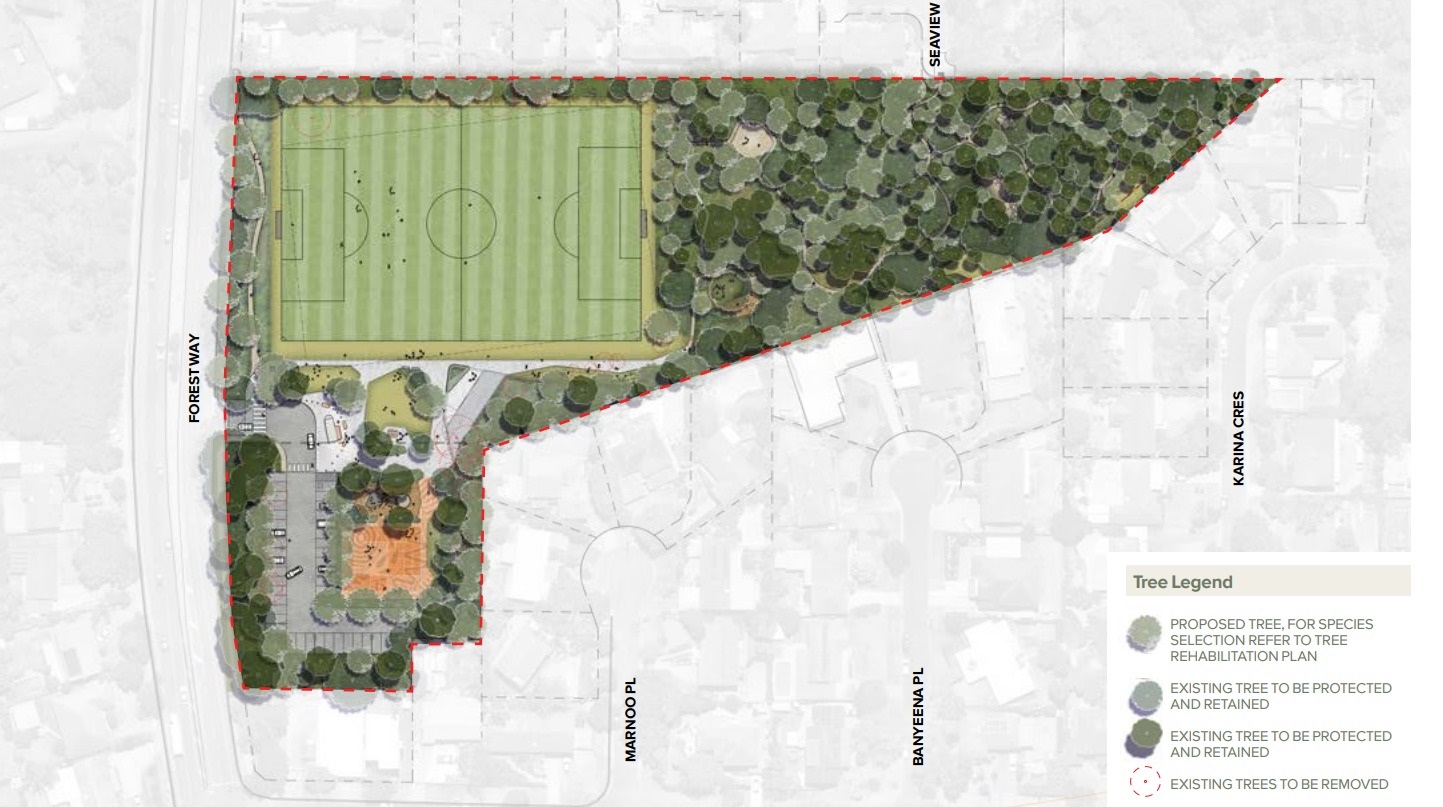
Sydney Metropolitan Wildlife Services: Possums In Your Roof

Pelicans Heading To The Coast Now: Winter Migrations
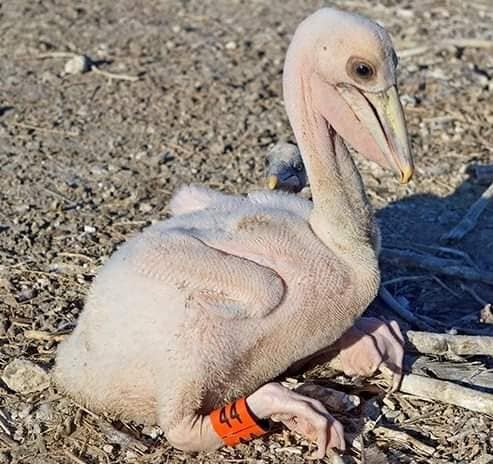
Whale Beach Clean Up: Sunday July 31
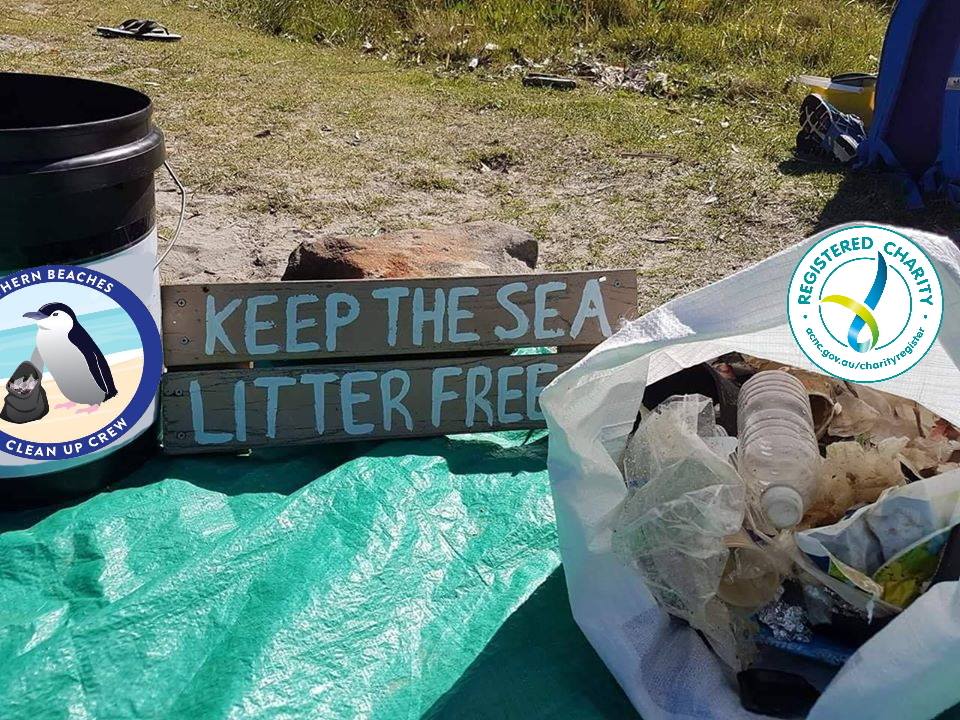
Barrenjoey Lighthouse Tours
Local Wildlife Rescuers And Carers State That Ongoing Heavy Rains Are Tough For Us But Can Be Tougher For Our Wildlife:
- Birds and possums can be washed out of trees, or the tree comes down, nests can disintegrate or hollows fill with water
- Ground dwelling animals can be flooded out of their burrows or hiding places and they need to seek higher ground
- They are at risk crossing roads as people can't see them and sudden braking causes accidents
- The food may disappear - insects, seeds and pollens are washed away, nectar is diluted and animals can be starving
- They are vulnerable in open areas to predators, including our pets
- They can't dry out and may get hypothermia or pneumonia
- Animals may seek shelter in your home or garage.
You can help by:
- Keeping your pets indoors
- Assessing for wounds or parasites
- Putting out towels or shelters like boxes to provide a place to hide
- Drive to conditions and call a rescue group if you see an animal hit (or do a pouch check or get to a vet if you can stop)
- If you are concerned take a photo and talk to a rescue group or wildlife carer
There are 2 rescue groups in the Northern Beaches:
Sydney Wildlife: 9413 4300
WIRES: 1300 094 737
Please be patient as there could be a few enquiries regarding the wildlife.
Generally Sydney Wildlife do not recommend offering food but it may help in some cases. Please ensure you know what they generally eat and any offerings will not make them sick. You can read more on feeding wildlife here
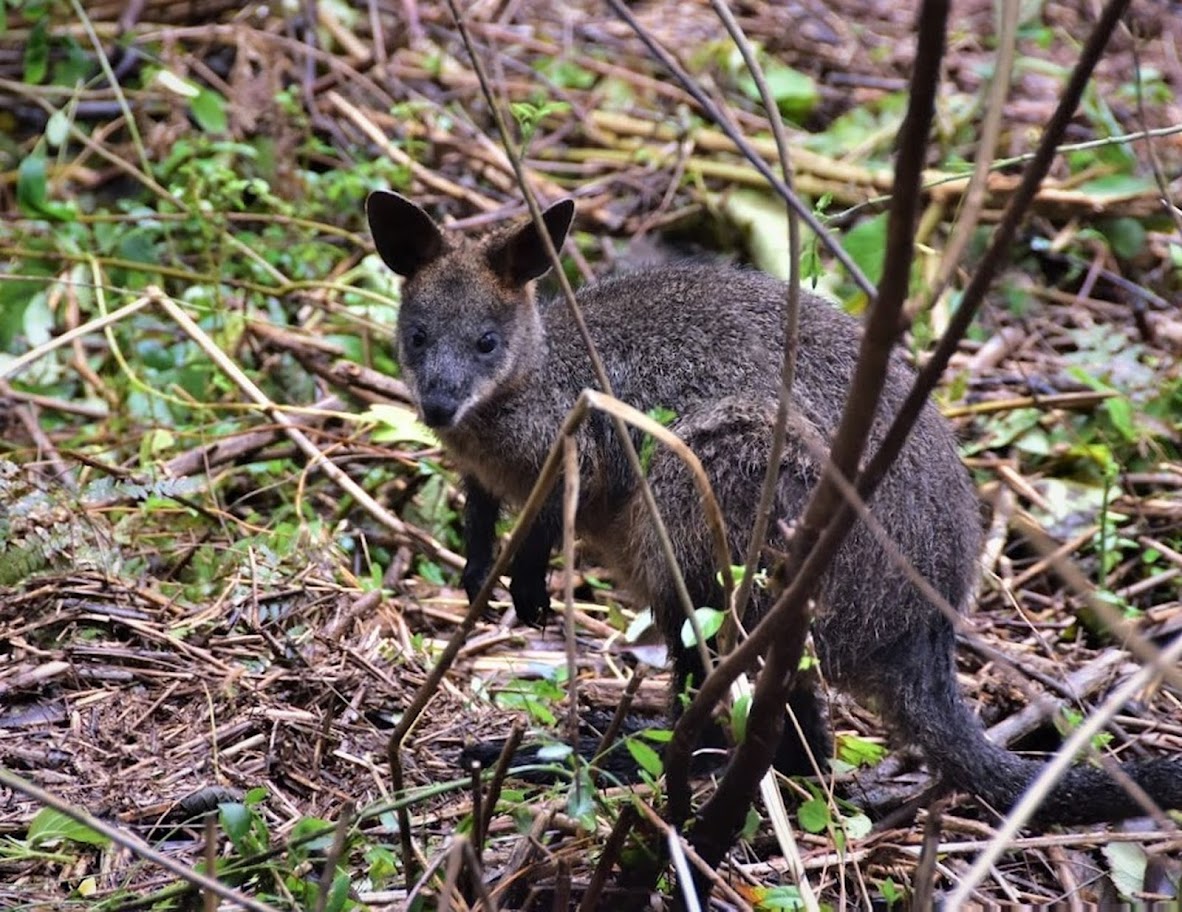
Information courtesy Ed Laginestra, Sydney Wildlife volunteer. Photo: Warriewood Wetlands Wallaby by Kevin Murray, March 2022.
Aviaries + Possum Release Sites Needed

Sydney Wildlife Rescue: Helpers Needed

Bushcare In Pittwater
Where we work Which day What time
Avalon
Angophora Reserve 3rd Sunday 8:30 - 11:30am
Avalon Dunes 1st Sunday 8:30 - 11:30am
Avalon Golf Course 2nd Wednesday 3 - 5:30pm
Careel Creek 4th Saturday 8:30 - 11:30am
Toongari Reserve 3rd Saturday 9 - 12noon (8 - 11am in summer)
Bangalley Headland 2nd Sunday 9 to 12noon
Bayview
Winnererremy Bay 4th Sunday 9 to 12noon
Bilgola
North Bilgola Beach 3rd Monday 9 - 12noon
Algona Reserve 1st Saturday 9 - 12noon
Plateau Park 1st Friday 8:30 - 11:30am
Church Point
Browns Bay Reserve 1st Tuesday 9 - 12noon
McCarrs Creek Reserve Contact Bushcare Officer To be confirmed
Clareville
Old Wharf Reserve 3rd Saturday 8 - 11am
Elanora
Kundibah Reserve 4th Sunday 8:30 - 11:30am
 Mona Vale
Mona Vale Mona Vale Beach Basin 1st Saturday 8 - 11am
Mona Vale Dunes 2nd Saturday +3rd Thursday 8:30 - 11:30am
Newport
Bungan Beach 4th Sunday 9 - 12noon
Crescent Reserve 3rd Sunday 9 - 12noon
North Newport Beach 4th Saturday 8:30 - 11:30am
Porter Reserve 2nd Saturday 8 - 11am
North Narrabeen
Irrawong Reserve 2nd Saturday 2 - 5pm
Palm Beach
North Palm Beach Dunes 3rd Saturday 9 - 12noon
Scotland Island
Catherine Park 2nd Sunday 10 - 12:30pm
Elizabeth Park 1st Saturday 9 - 12noon
Pathilda Reserve 3rd Saturday 9 - 12noon
Warriewood
Warriewood Wetlands 1st Sunday 8:30 - 11:30am
Whale Beach
Norma Park 1st Friday 9 - 12noon
Western Foreshores
Coopers Point, Elvina Bay 2nd Sunday 10 - 1pm
Rocky Point, Elvina Bay 1st Monday 9 - 12noon
Gardens And Environment Groups And Organisations In Pittwater
Varroa Mite Incursion Detected In NSW
New Biosecurity Zone Set Up For Varroa Mite
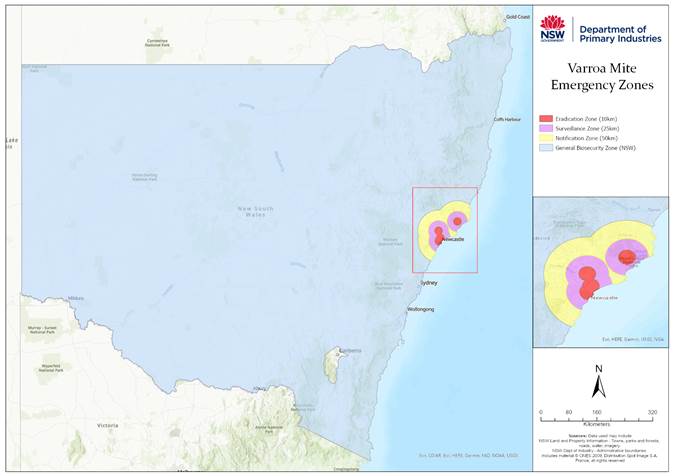
FCNSW To Pay Another $230,000 Following Seven Convictions This Month
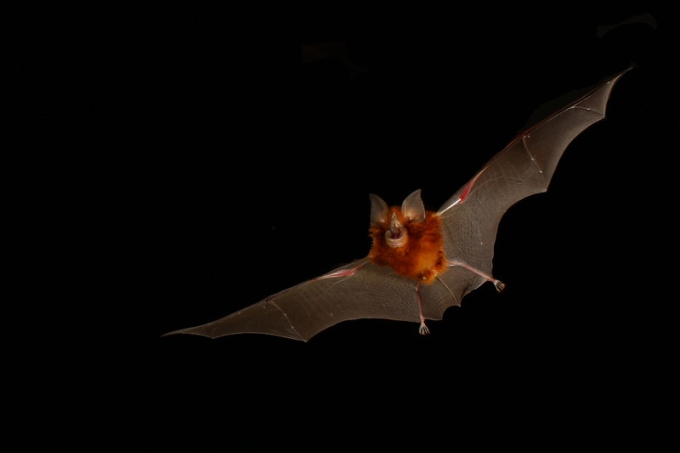 Mapping errors in Dampier State Forest near Bodalla, have cost Forestry Corporation of NSW (FCNSW) $230,000 after the Land and Environment Court convicted FCNSW for breaching its approval and carrying out unlawful forestry activities in an exclusion zone.
Mapping errors in Dampier State Forest near Bodalla, have cost Forestry Corporation of NSW (FCNSW) $230,000 after the Land and Environment Court convicted FCNSW for breaching its approval and carrying out unlawful forestry activities in an exclusion zone.Asbestos Dumper To Pay Over $450,000 For Offences In Sydney And Illawarra
- Mr Binos convicted of one charge of failing to comply with a clean-up notice contrary to s 91(5) of the Protection of the Environment Operations Act 1997 (POEO Act).
- Mr Binos ordered to:
- pay a fine of $110,000 (the maximum fine that could be imposed by the local court),
- have the waste removed and disposed of lawfully within one year, and
- pay the EPA’s legal costs of $30,000.
- One charge of unlawful disposal of asbestos waste contrary to s 144AAA of the POEO Act,
- and one charge of failing to comply with a clean-up notice contrary to s 91(5) of the POEO Act.
- pay a fine of $110,000 for each offence (total of $220,000),
- remove any contaminated fill at the property within six months of being released from custody,
- compensate the landowner for costs incurred in remediation, totalling $61,192.21,
- and pay the EPA’s legal costs of $30,000.
Boost For Solar Panels Diversion From Landfill
- PV Industries is receiving $2.3 million to scale-up its solar panel recycling technology and build a new solar panel and battery recycling facility in the Bankstown area, which will process up to 8,000 tonnes per year.
- Tes-Amm Australia is receiving $1.9 million to construct a new lithium-ion battery recycling facility in the Fairfield area, processing up to 800 tonnes per year of lithium-ion batteries from solar panel systems.
- Scipher Technologies is receiving $1.7 million to construct a solar panel recycling facility in the Albury area, which aims to process up to 2,000 tonnes per annum, with the recovered materials going back into local markets.
- Blue Tribe is receiving $400,000 to investigate a process to divert serviceable decommissioned solar panels from landfill for reuse in community solar gardens, which has the potential to divert 10,000 tonnes per year of reusable end-of-life solar panels by 2030.
- The University of New South Wales is receiving $1million to complete research and development activities for a prototype recycling technology that can recover valuable metals, glass, and silicon from solar panels.
Environmental Assessment Of Illawarra's Mountain Bike Network Released: Have Your Say
Tender Awarded For New Eurobodalla Dam
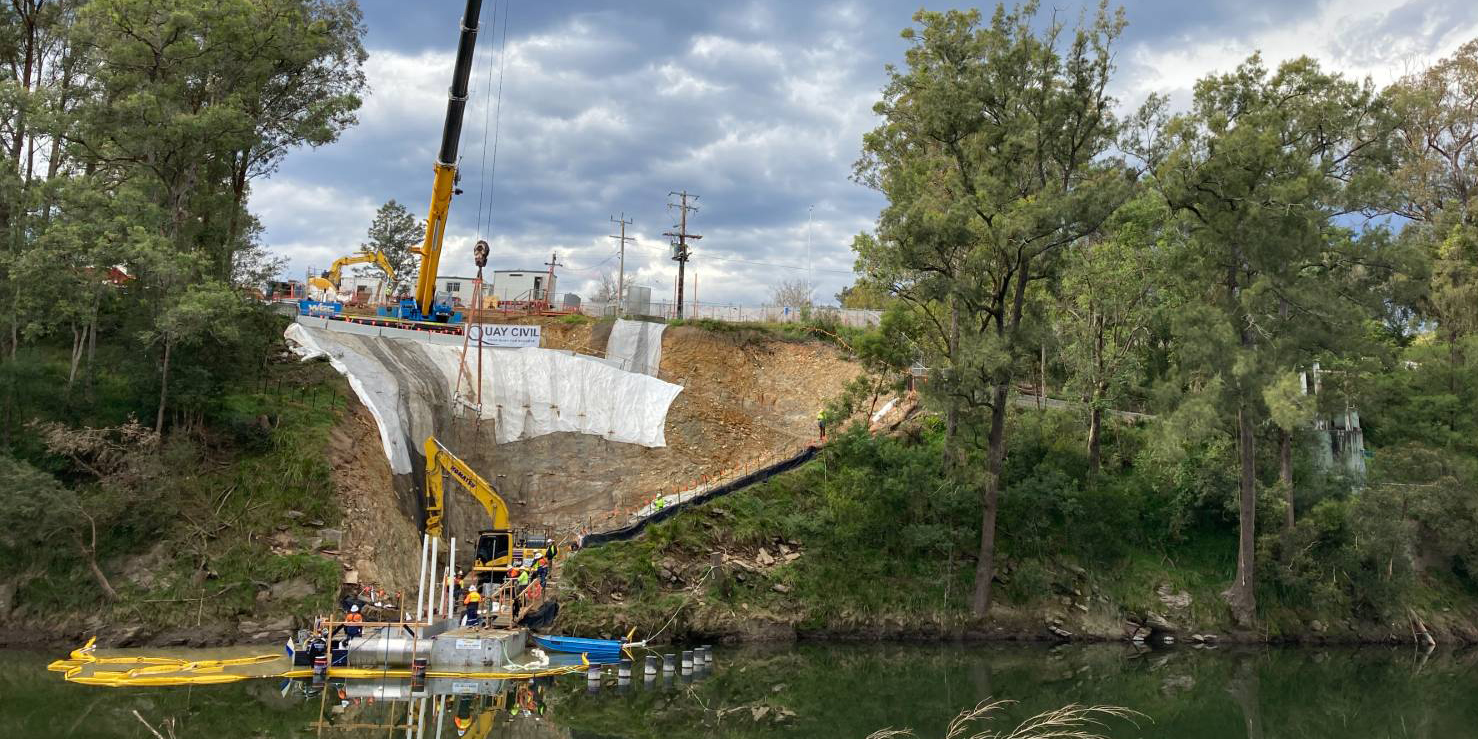
Secrets Of Aging Revealed In Largest Study On Longevity; Aging In Reptiles And Amphibians
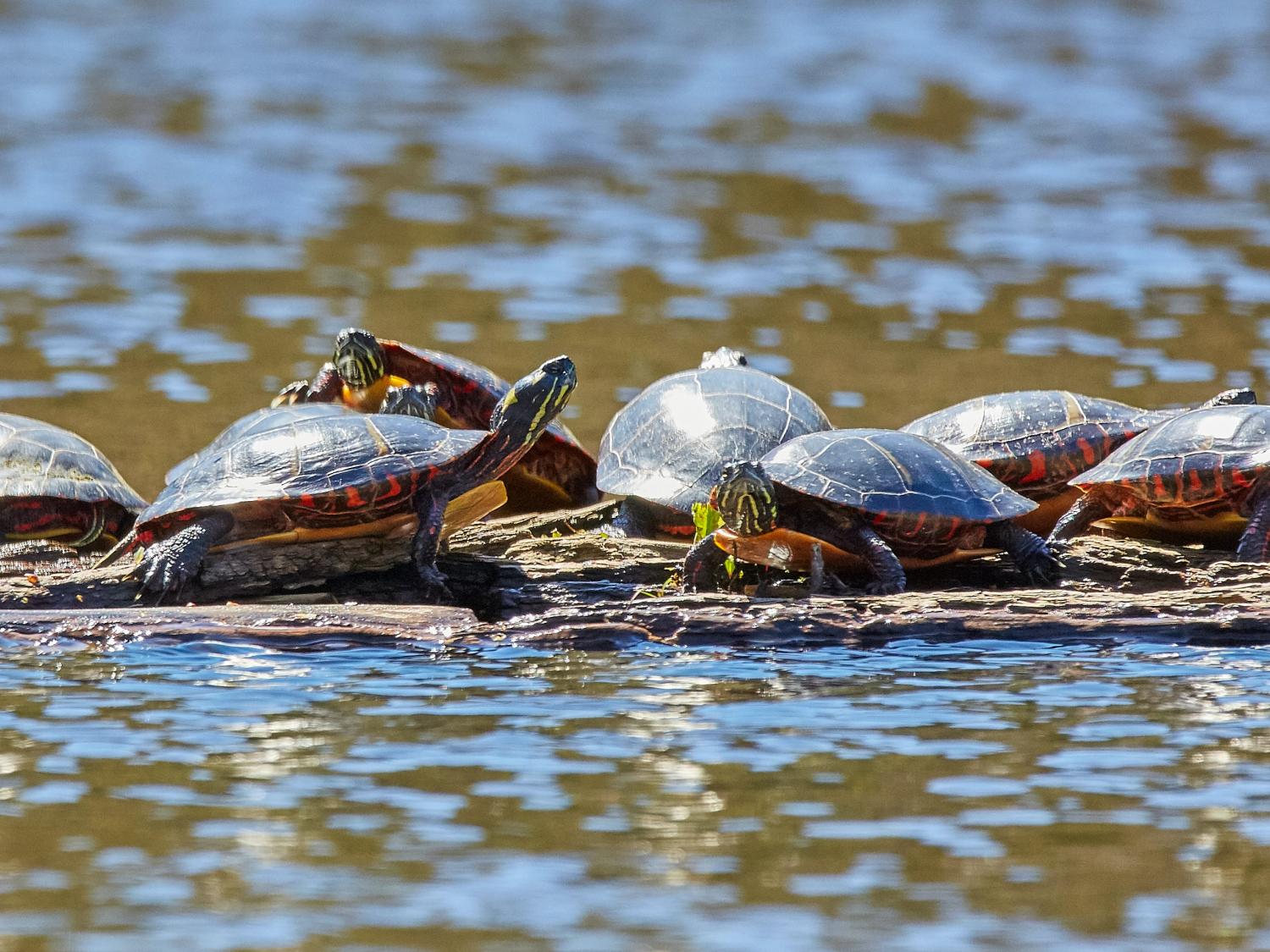
Climate Change Is Making Plants More Vulnerable To Disease; New Research Could Help Them Fight Back
Funding For New Frontiers Exploration Program: For Deposits Of Critical Minerals And High-Tech Metals
Support For Developing Countries To Tackle Environment And Climate Change Challenges: United Nations Ocean Conference
Killalea Joins The National Park Estate
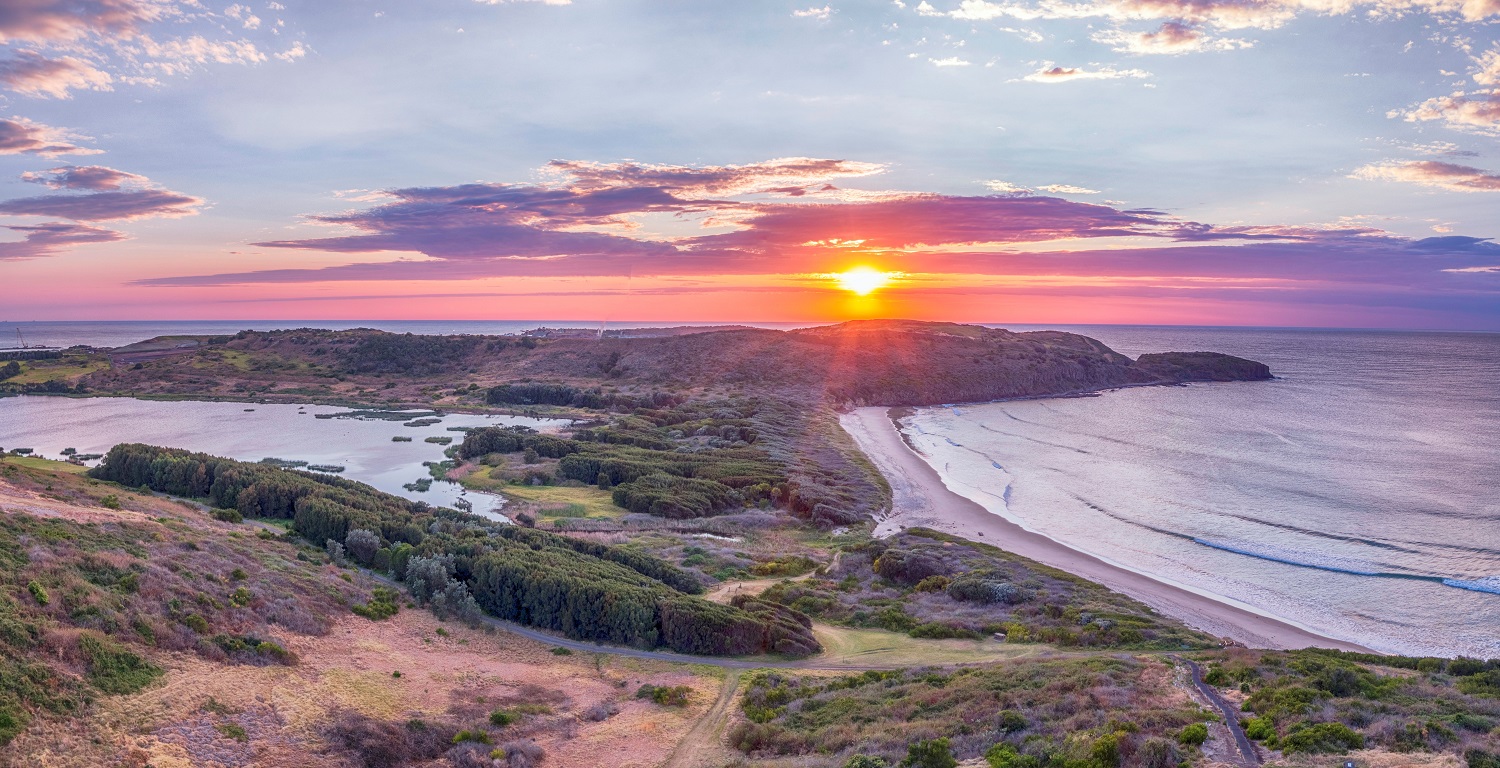
Big Blue Carbon Boost To Restore Mangroves, Seagrasses And Tidal Marshes
Pair Of Orcas Deterring Great White Sharks
We blew the whistle on Australia’s central climate policy. Here’s what a new federal government probe must fix
Andrew Macintosh, Australian National University; Don Butler, Australian National University, and Megan C Evans, UNSW SydneyClimate Change Minister Chris Bowen is today expected to announce a much anticipated review of Australia’s carbon credit scheme, known as the Emissions Reduction Fund.
In March, we exposed serious integrity issues with the scheme, labelling it a fraud on taxpayers and the environment. We welcome the federal government’s review. Labor has promised a 43% cut in Australia’s emissions by 2030, and a high-integrity carbon credit market is vital to reaching this goal.
The fund was established by the Abbott government in 2014 and is now worth A$4.5 billion. It provides carbon credits to projects that reduce greenhouse gas emissions. For the past decade, it has been the centrepiece of Australia’s climate policy.
In this and subsequent articles, we seek to simplify the issues for the Australian public, the new parliament and whoever is appointed to review the Emissions Reduction Fund.
The Background
We are experts in environmental law, markets and policy. The lead author of this article, Andrew Macintosh, is the former chair of the Emissions Reduction Assurance Committee (ERAC), the government-appointed watchdog that oversees the Emissions Reduction Fund’s methods.
Our analysis suggests up to 80% of credits issued under three of the fund’s most popular emissions reduction methods do not represent genuine emissions cuts that wouldn’t have happened otherwise.
Our decision to call the scheme a “fraud” was deliberate and considered. In our view, a process that systematically pays for a service that’s not actually provided is fraudulent.
The Clean Energy Regulator (which administers the fund) and the current ERAC reviewed our claims and, earlier this month, dismissed them. We have expressed serious concerns with that review process, which we believe was not transparent and showed a fundamental lack of understanding of the issues.
This week, Bowen said our concerns were “substantial and real” and he took them “very seriously”.
The Conversation contacted the Clean Energy Regulator regarding the authors’ claims. The regulator pointed to its “comprehensive response” to the issues raised and also rejected allegations of fraud. The full statement is included at the end of this article.

The 3 Biggest Problems
Under the fund, projects that reduce emissions are rewarded with carbon credits. These credits can be sold on the carbon market to entities that want to offset their emissions. Each credit is supposed to represent one tonne of carbon abatement.
Buyers include the federal government (using taxpayer funds) and private entities that are required to, or voluntarily choose to, offset their emissions.
Under the scheme, a range of methods lay out the rules for emissions abatement activities. Concerns have been raised about these methods for years.
Our initial criticism focuses on the scheme’s most popular methods, which account for about 75% of carbon credits issued:
human-induced regeneration: projects supposed to regenerate native forests through changes in land management practices, particularly reduced grazing by livestock and feral animals
avoided deforestation: projects supposed to protect native forests in western New South Wales that would otherwise be cleared
landfill gas: projects supposed to capture and destroy methane emitted from solid waste landfills using a flare or electricity generator.
Our analysis found credits have been issued for emissions reductions that were not real or additional, such as:
- protecting forests that were never going to be cleared
- growing trees that were already there
- growing forests in places that will never sustain them permanently
- large landfills operating electricity generators that would have operated anyway.
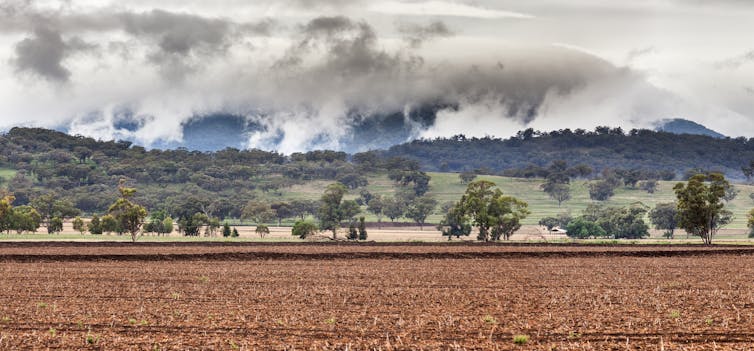
In forthcoming articles, we will detail the problems with these methods.
However, at a high level, the issues have arisen because the scheme has focused on maximising the number of carbon credits issued, to put downward pressure on carbon credit prices. This has resulted in attempts to use carbon offsets in inappropriate situations.
A Tricky Policy Lever
Designing high integrity methods for calculating carbon credits is hard because it involves:
trying to determine what would happen in the absence of the incentive provided by the carbon credit. For example, would a farmer have cleared a paddock of trees if they weren’t given carbon credits to retain it?
activities where it’s not always clear if carbon abatement was the result of human activity or natural variability. For instance, soil carbon levels can be increased by changing land management practices, but can also happen naturally due to rainfall
activities where it can be hard to measure the emissions outcome. For example, carbon sequestration in vegetation is often measured using models that can be inaccurate when applied at the project scale
dynamic carbon markets with fast-evolving technologies.
These complexities mean mistakes are inevitable; no functional carbon offset scheme can ever get it 100% right. A degree of error must be accepted.
But decisions regarding risk tolerance must consider the consequences of issuing low-integrity credits, including contributing to worsening climate change.
The Dangers Of Sham Credits
The safeguard mechanism places caps on the emissions of major polluters and was originally intended to protect gains achieved through the Emissions Reduction Fund. It applies to about 200 large industrial polluters and requires them to buy carbon credits if their emissions exceed these caps.
When carbon credits used by polluters do not represent real and additional abatement, Australia’s emissions will be higher than they otherwise would be.
To avoid such risks, the legislation governing the Emissions Reduction Fund requires the methods to be “conservative” and supported by “clear and convincing evidence”.
The fund’s main methods do not meet these standards.
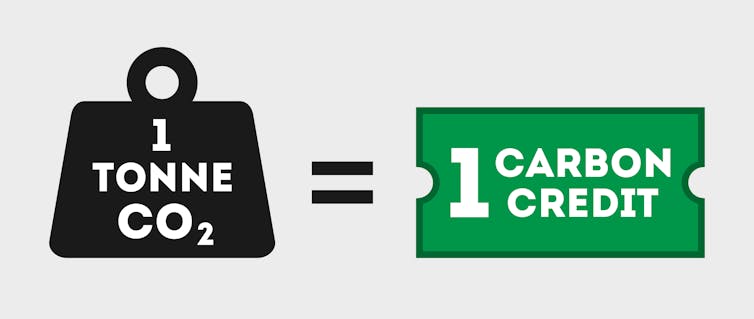
An Open And Transparent Process
Carbon credit schemes are, by nature, complex and involve a high risk of error. To maintain integrity, systems to promote transparency are needed.
This includes requiring administrators to not just expect, but actively seek out errors and move quickly to correct them.
To this end, rules are needed to:
force the disclosure of information by the Clean Energy Regulator and ERAC
guarantee disinterested third parties the right to be involved in rule-making
give anybody the right to seek judicial review of decisions made by the Clean Energy Regulator and ERAC
require proponents to move off methods found to contain material errors.
The Emissions Reduction Fund has none of these features and needs urgent reform.
We hope the federal government review will be comprehensive and independent, with the power to compel people to give evidence. Because Australians deserve assurance that our national climate policy operates with the utmost integrity.
The Clean Energy Regulator provided the following statement in response to this article.
The comments made regarding the Emissions Reduction Fund (ERF) repeat generalised claims that ‘fraud’ is occurring and are rejected. No substantial evidence for claims of fraud has ever been provided. These are serious allegations and the CER is dismayed at the statement that attributes these alleged outcomes to the work done by the CER. We understand that ERAC has the same view.
The claims about lack of additionality and over-crediting are also not new. Prof Macintosh and his colleagues have not engaged with the substance of the ERAC’s comprehensive response papers on human induced regeneration and landfill gas and the CER’s response to the claims on avoided deforestation.
The government has said it will undertake a review of the ERF and details will be announced shortly. We do not wish to pre-empt the scope of the review or its findings. We welcome the review and look forward to engaging substantively with the review process once it commences.![]()
Andrew Macintosh, Professor and Director of Research, ANU Law School, Australian National University; Don Butler, Professor, Australian National University, and Megan C Evans, Senior Lecturer and ARC DECRA Fellow, UNSW Sydney
This article is republished from The Conversation under a Creative Commons license. Read the original article.
How technology allows us to reveal secrets of Amazonian biodiversity
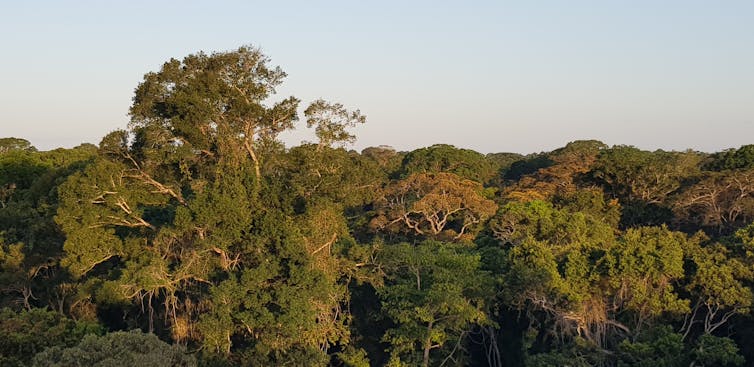
Tropical forest covers 12% of the planet’s land surface yet hosts around two thirds of all terrestrial species. Amazonia, which spans the vast Amazon River basin and the Guiana Shield in South America, is the largest extent of remaining tropical forest globally, home to more species of animal than any other terrestrial landscape on the planet.
Spotting wildlife in these dark and dense forests teeming with insects and spiny palms is always challenging. This is because of the very nature of biodiversity in Amazonia, where there is a small number of abundant species, and a greater number of rare species which are difficult to survey adequately.
Understanding what species are present and how they relate to their environment is of fundamental importance for ecology and conservation, providing us with essential information on the impacts of human-made disturbances such as climate change, logging or wood burning. In turn, this can also enable us to pick up on sustainable human activities such as selective logging – the practice of removing one or two trees and leaving the rest intact.
As part of BNP’s Bioclimate project, we are deploying a range of technological fixes like camera traps and passive acoustic monitors to overcome these hurdles and refine our understanding of Amazonian wildlife. These devices beat traditional surveys through their ability to continuously gather data without the need for human interference, allowing animals to go about their business undisturbed.
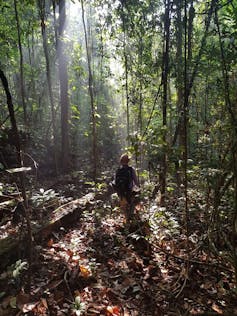
The Eyes Among The Trees
Camera traps are small devices that are triggered by changes of activity in their vicinity, such as animal movements. They have been essential to our field work in the Tapajos National Forest in Para, North West Brazil, allowing us to investigate whether disturbances such as climate change have impacted upon the presence and behaviour of animals that are in turn necessary to natural processes.
Animals’ dispersal of seeds, which enables forest regeneration, is one of such processes. By eating fruits or carrying nuts, they will typically excrete or drop the seeds elsewhere. Our research has shown that at least 85% of all tree species in our plots have their seeds scattered by animals.
We also know that many of these animals are strongly impacted by disturbance. To better grasp the impact of losing these seed-dispersing species, we need to know which ones spread which plants and how far.
We have attempted to look at this by setting up cameras at the foot of fruit-bearing trees on our study site, revealing which species were eating which fruits and thus carrying seeds across the forest.
The survey resulted in over 30,000 hours of footage, and we were able to ascertain that 5,459 videos contained animals. An impressive total of 152 species of birds and mammals were recorded, including rare records of threatened species such as the vulturine parrot (Pyrilia vulturina).
The videos included incredible insights into animal behaviour, such as an ocelot (Leopardus pardalis) hunting a common opossum (Didelphis marsupialis), a giant anteater (Myrmecophaga tridactyla) carrying an infant on its back, and even a curious female tufted capuchin monkey (Sapajus apella) that checked out a camera and ended up throwing it to the floor.
Importantly, we also recorded 48 species eating fruit, including species considered important seed dispersers, such as the South American tapir (Tapirus terrestris) which is able to scatter large seeds over longer distances due to its size.
Our research demonstrated that bird species such as the white-crested guan (Penelope pileata) and mammals like the silvery marmoset (Mico argentatus) and the Amazonian brown brocket deer (Mazama nemorivaga) are frequent consumers of fruits. Many of these species are overhunted in the study region which may lead to cascading impacts for forest regeneration.
Pulsing Forests
Acoustic recorders, on the other hand, are key to compiling inventories of the species-rich bird community. Indeed although birds are rarely seen in dense forest, their vocalisations reveal their presence.
When ornithologists study tropical birds, they are limited by how often they can conduct counts as it is often logistically challenging to return to individual locations. Consequently traditional surveys are often of quite long duration – between 5 and 15 minutes – with only a limited number of repeat counts at each surveyed site. This means that only a small proportion of the time period in which birds are most active – the two hours after sunrise typically known as the dawn chorus – is able to be surveyed.
Yet birds don’t all sing at the same time: a few species prefer to sing very early in the morning, most wait until it is slightly warmer and the sun is fully up, and a few more rise late. By limiting ourselves to a few surveys, it is difficult to cover the full time period and detect all the species present. Moreover, surveys only conducted on a handful of days mean factors such as the weather or the presence of predators on certain days can completely change which species are detected.
Our research found that by setting autonomous acoustic recorders to take 240 very short 15 second recordings totalling one hour of surveying, we could record 50% more species at each site that we surveyed in comparison to four 15-minute surveys that replicated the duration of human surveys. The extra surveys allowed us to spread our survey period across more days, but most importantly across the whole dawn chorus. We found that there was a small group of species which preferred to sing from 15 minutes before sunrise to 15 minutes after, and we were only really likely to detect if them if we had multiple surveys during that period – something only possible with automated recorders.
These more complete surveys allow us to provide better estimates of the species living in these hyperdiverse regions – but also of the ones that vanish when forests are logged or burnt. Thanks to this method, we were able to detect 224 species of bird across 29 locations with a total of just one hour of surveying at each location.
The species present across intact and disturbed forest also confirmed our previous research that showed that undisturbed, primary forests hold unique bird communities that are lost when forests are damaged by selective logging or wildfires.
Acoustic recorders have also allowed us to gather data over long stretches of time, with over 10,000 hours clocked thus far.
However, collecting data on this scale also means it is not viable for a scientist to listen to all of the recordings. Instead, the new field of ecoacoustics has developed statistical techniques to characterise entire soundscapes. These acoustic indices measure variation in amplitude and frequency to give a metric of just how busy or varied each soundscape is. By doing away with the need to identify individual sounds, these can efficiently process large volumes of acoustic data.
We have used acoustic indices to show undisturbed primary forests have unique soundscapes that can be identified with machine-learning techniques. Such data in turn allows us to contrast soundscapes that have been disturbed by phenomena such as fires or logging and make out the species groups which have been the most impacted.
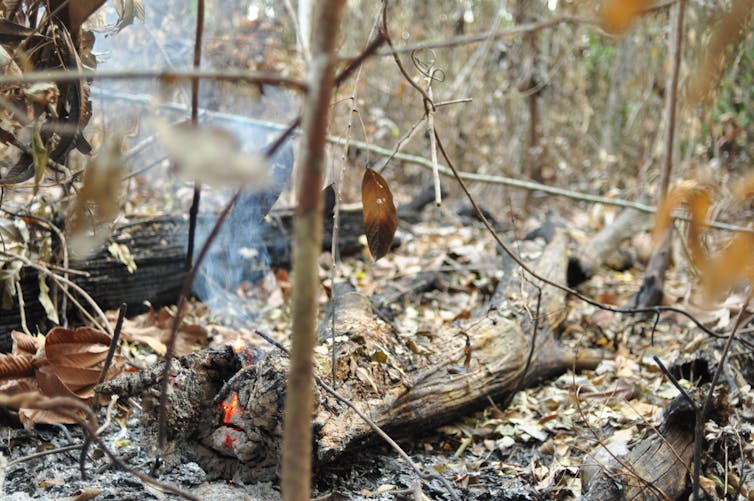
To conclude, camera traps and acoustic recorders allows us to have eyes and ears in the forest even when our researchers are not there. As technology develops we will continue to use the latest techniques to understand animal behaviour and ecology better, and how to use that to better value and protect the habitats they live in.
We are particularly looking to develop deep-learning models to identify species, and in some cases to differentiate between individuals of the same species. Images and recorded sounds from automated recorders are opening up new ways of understanding animal abundance and behaviour, providing new insights into the secret world of tropical forest fauna.

The research project “Bioclimate” of which this publication is part was supported by the BNP Paribas Foundation as part of the Climate and Biodiversity Initiative program. It is coordinated by the Rede Amazonia Sustentavel (RAS).![]()
Oliver Metcalf, Postdoctoral Research Associate, Manchester Metropolitan University and Liana Chesini Rossi, Invited User, University of São Paulo State
This article is republished from The Conversation under a Creative Commons license. Read the original article.
Climate change is putting food safety at risk more often, and not just at picnics and parties

Every year, almost 1 in 6 Americans gets a foodborne illness, and about 3,000 people die from it, according to Centers for Disease Control and Prevention estimates. Picnics and parties where food sits out for hours are a common source, but heat waves and power outages are another silently growing threat.
As global temperatures rise, the risk of foods going bad during blackouts in homes or stores or during transit in hot weather rises with them. Elena Naumova, an epidemiologist and data scientist at Tufts University, explains the risk and what you need to know to stay safe.
What Does Climate Change Have To Do With Foodborne Illness?
The link between foodborne illness and climate change is quite straightforward: The pathogens that cause many foodborne infections are sensitive to temperature. That’s because warm, wet weather conditions stimulate bacterial growth.
Three main factors govern the spread of foodborne illness: 1) the abundance, growth, range and survival of pathogens in crops, livestock and the environment; 2) the transfer of these pathogens to food; and 3) human exposure to the pathogens.
Safety measures like warning labels and product recalls can help slow the spread of harmful bacteria and parasites, but these measures don’t always evolve rapidly enough to keep pace with the changing risk.
One growing problem is that heat waves, wildfires and severe storms are increasingly triggering power outages, which in turn affect food storage and food handling practices in stores, production and distribution sites and homes. A review of federal data in 2022 found that major U.S. power outages linked to severe weather had doubled over the previous two decades. California often experiences smaller-scale outages during heat waves and periods of high wildfire risk.
This can happen on the hottest and, in some areas, most humid days, creating ideal conditions for bacteria to grow.
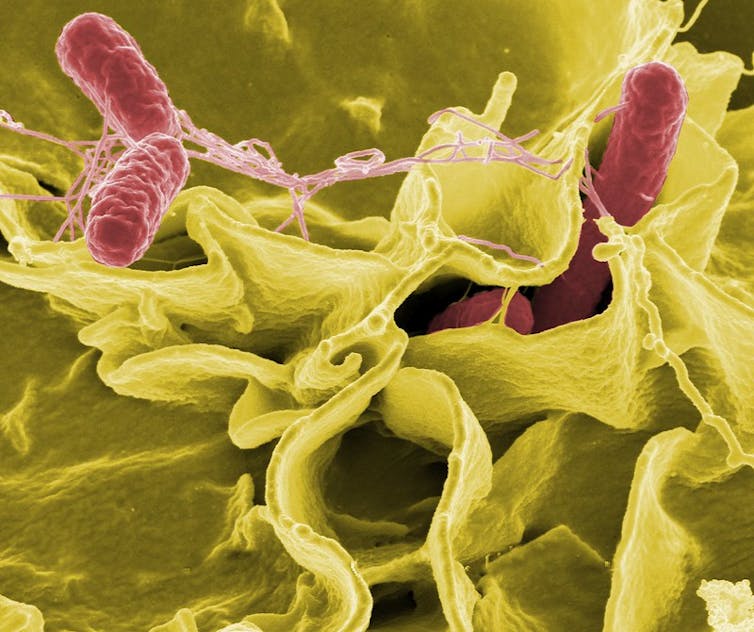
Which Causes Of Foodborne Illness Are Increasing With The Heat?
Nationwide, many types of foodborne infection peak in warm summer months.
Cyclospora, a tiny parasite that causes intestinal infections and is transmitted through food or water contaminated with feces, often on imported vegetables and fruits, peaks in early June.
The bacteria Campylobacter, a common cause of diarrhea that’s often linked to undercooked meat; Vibrio, linked to eating raw or undercooked shellfish; Salmonella, which causes diarrhea and is linked to animal feces; and STEC, a common type of E. coli, peak in mid-July. And the parasite Cyptosporidium, germ Listeria and bacteria Shigella peak in mid-August.
Many of these infections cause upset stomach, but they can also lead to severe diarrhea, dehydration, vomiting and even longer-term illnesses, such as meningitis and multiple organ failures.

In our studies, my colleagues and I have also found that food recalls increase during summer months.
Typically, the U.S. sees about 70 foodborne outbreaks per month, with about two of them resulting in a food recall. In summer, the number of outbreaks can exceed 100 per month, and the number of recall-related outbreaks goes up to six per month, increasing from 3% to 6% of all reported and investigated outbreaks nationwide.
The rate of individual infections can also easily double or triple the annual average during summer months.
Precisely estimating infection numbers is very challenging because the vast majority of foodborne illness outbreaks – an estimated 80% of illnesses and 56% of hospitalizations – are not attributed to known pathogens due to insufficient testing, and many foodborne illnesses are not even reported to the health authorities.
What Types Of Food Should People Worry About?
Watch out for perishable products, including meat, poultry, fish, dairy and eggs, along with anything labeled as requiring refrigeration. How warm a food item can get before becoming risky varies, so the simplest rule for keeping food safe is to follow food labels and instructions.
The CDC website emphasizes four basic rules to prevent food poisoning at home: clean, separate, cook and chill.
It also offers some guidelines for when the power goes out, starting with keeping refrigerator and freezer doors closed. “A full freezer will keep food safe for 48 hours (24 hours if half-full) without power if you don’t open the door. Your refrigerator will keep food safe for up to four hours without power if you don’t open the door,” it says.

After four hours without power or a cooling source, the CDC recommends that most meat, dairy, leftovers and cut fruits and vegetables in the refrigerator be thrown out.
Unfortunately, you cannot see, smell or taste many harmful pathogens that cause foodborne illness, so it’s better to be safe than sorry. Rule of thumb: When in doubt, throw it out.
What’s The Best Response If A Person Gets Sick From Food?
If you do get sick, it can be hard to pinpoint the culprit. Harmful bacteria can take anywhere from a few hours to several days to make you sick. And people respond in different ways, so the same food might not make everyone ill.
Check with your doctor if you think you have food poisoning. Get tested so your case will be reported. That helps public health authorities get a better sense of the extent of infections. The full extent of infections is typically vastly underreported.
I recommend checking health department websites, like Washington state’s, for more advice, and check on food recalls during the hot months.![]()
Elena N. Naumova, Professor of Epidemiology and Data Science, Tufts University
This article is republished from The Conversation under a Creative Commons license. Read the original article.
‘Draconian and undemocratic’: why criminalising climate protesters in Australia doesn’t actually work
Robyn Gulliver, The University of QueenslandA man who drove through a climate protest blocking the Harbour Tunnel this week has copped a A$469 fine, while multiple members of the activist group were arrested. The protest was among a series of peak hour rallies in Sydney by Blockade Australia, in an effort to stop “the cogs in the machine that is destroying life on earth”.
Disruptive protests like these make an impact. They form the iconic images of social movements that have delivered many of the rights and freedoms we enjoy today.
They attract extensive media coverage that propel issues onto the national agenda. And, despite media coverage to the contrary, research suggests they don’t reduce public support for climate action.
But disruptive protest also consistently generates one negative response: attempts to criminalise it.
Tasmania, Victoria and New South Wales have all recently proposed or introduced anti-protest bills targeting environmental and climate activists. This wave of anti-protest legislation has been described as draconian and undemocratic.
Let’s take a look at how these laws suppress environmental protesters – and whether criminalisation actually works.
How Do Governments Criminalise Protest?
The criminalisation of environmental protest in Australia isn’t new.
Tasmania provides a compelling example. The Tasmania Workplaces (Protection from Protestors) Act 2014 sought to fine demonstrators up to $10,000 if they “prevent, hinder, or obstruct the carrying out of a business activity”. Described as a breach of the International Covenant on Civil and Political Rights, it was subsequently voted down by the Tasmanian Legislative Council.
The bill was resurrected in 2019, but also voted down, an outcome described by the Human Rights Law Centre as a “win for democracy”.
But yet again in 2022, the freedom to protest in Tasmania is under threat. The Police Offences Amendment (Workplace Protection) Bill 2022 proposes fines of up to $21,625 and 18 months jail for peaceful protest.
Activities such as handing out flyers, holding a placard or sharing a petition could fall within the offences.

Tasmania is not an outlier. After the Port of Botany and Sydney climate blockades in March this year, NSW passed the Roads and Crimes Legislation Amendment Bill 2022.
Almost 40 civil society groups called to scrap the bill, which used vague and broad wording to expand offences with up to two years in jail and a $22,000 fine.
Similarly, the Andrews government in Victoria is introducing the Sustainable Forests Timber Amendment (Timber Harvesting Safety Zones) Bill 2022, which raises penalties on anti-logging protest offences to $21,000 or 12 months imprisonment.
Other Ways Australia Criminalise Protest
Legislation isn’t the only tool in the toolbox of protest criminalisation. The expansion of police and government discretionary powers is also often used. Examples include:
“move-on” orders restricting protesters’ access to public spaces or engagement in particular behaviours
on-the-spot fines, such as for the use of specific lock-on devices defined in Queensland legislation
surveillance, pre-emptive arrests and infiltration of landowners and anti-coal groups, including Blockade Australia
onerous bail conditions, such as restricting travel to CBD areas, banning journalists from mine sites, and unprecedented non-association orders preventing interaction with family
persistent attempts to silence environmental NGOs engaging in advocacy.
Corporations also use discretionary powers. Adani/Bravus coal mining company reportedly used private investigators to restrict Wangan and Jagalingou Traditional Owners’ access to their ceremonial camp.
It also reportedly bankrupted senior spokesperson Adrian Burragubba in 2019, sued one climate activist for intimidation, conspiracy and breaches of contract, surveilled his family, and is pursuing him for $600 million (now reduced to $17m) in damages.
In statements to the ABC and the Guardian, Adani says it is exercising its rights under the law to be protected from individuals and groups who act “unlawfully”.
Another tool for suppressing protest is the use of “othering” language. This language seeks to stigmatise activists, de-legitimise their concerns and frame them as threats to national security or the economy.
We see it frequently after disruptive protest. For example, ministers have recently described Blockade Australia protesters as “bloody idiots”, who should “get a real job”.
The Queensland Premier has described protesters as “extremists”, who were “dangerous, reckless, irresponsible, selfish and stupid”.
Why Do Governments Feel The Need To Implement Harsher Penalties?
Some politicians have argued that anti-protest laws act as a “deterrent” to disruptive protest. Critics have also argued that government powers are used as a shield to protect corporate interests.
In its new report, for example, the Australian Democracy Network shows how corporations can manipulate government powers to harass and punish opponents through a process called “state capture”.
Non-profit organisations have also demonstrated the powerful influence of the fossil fuel industry, particularly in weakening Australian environmentalists’ protest rights.
But it’s not only civil sector groups and protesters sounding the alarm. Increased repression of our rights to engage in non-violent protest have also been voiced by lawyers, scholars and observers such as the United Nations Special Rapporteur.
Does Criminalisation Reduce Protest?
Numerous organisations have highlighted how criminalising protest and silencing charities threaten democratic freedoms that are fundamental to a vibrant, inclusive and innovative society.
But more than that, these strategies don’t appear to work.
Courts have used anti-protest legislation to instead highlight the importance of peaceful protest as a legitimate form of political communication. They have struck down legislation, released activists from remand, overturned unreasonable bail conditions and reduced excessive fines.
Police, too, have refused to remove cultural custodians from their ceremonial grounds.
And in general, research shows the public does not support repressive protest policing.
Indeed, rates of disruptive protest are escalating, while protesters vow to continue despite the risk.
The majority of Australians support more ambitious climate action. Many agree with Blockade Australia’s statement that “urgent broad-scale change” is necessary to address the climate crisis.
Politicians may be better served by focusing their efforts on this message, rather than attacking the messengers.![]()
Robyn Gulliver, Postdoctoral Research Fellow, The University of Queensland
This article is republished from The Conversation under a Creative Commons license. Read the original article.
U.S. Supreme Court Limits U.S. EPA's Power To Curb Carbon Emissions
Statement By President Joe Biden On Supreme Court Ruling On West Virginia V. EPA
Ice world: Antarctica’s riskiest glacier is under assault from below and losing its grip
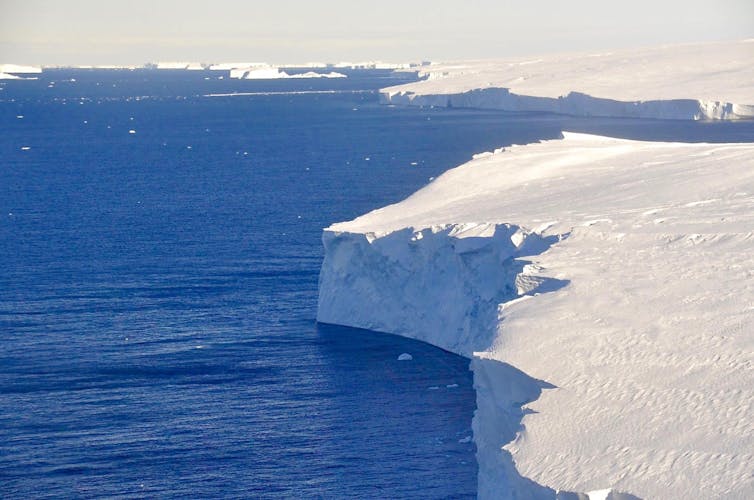
Flying over Antarctica, it’s hard to see what all the fuss is about. Like a gigantic wedding cake, the frosting of snow on top of the world’s largest ice sheet looks smooth and unblemished, beautiful and perfectly white. Little swirls of snow dunes cover the surface.
But as you approach the edge of the ice sheet, a sense of tremendous underlying power emerges. Cracks appear in the surface, sometimes organized like a washboard, and sometimes a complete chaos of spires and ridges, revealing the pale blue crystalline heart of the ice below.
As the plane flies lower, the scale of these breaks steadily grows. These are not just cracks, but canyons large enough to swallow a jetliner, or spires the size of monuments. Cliffs and tears, rips in the white blanket emerge, indicating a force that can toss city blocks of ice around like so many wrecked cars in a pileup. It’s a twisted, torn, wrenched landscape. A sense of movement also emerges, in a way that no ice-free part of the Earth can convey – the entire landscape is in motion, and seemingly not very happy about it.
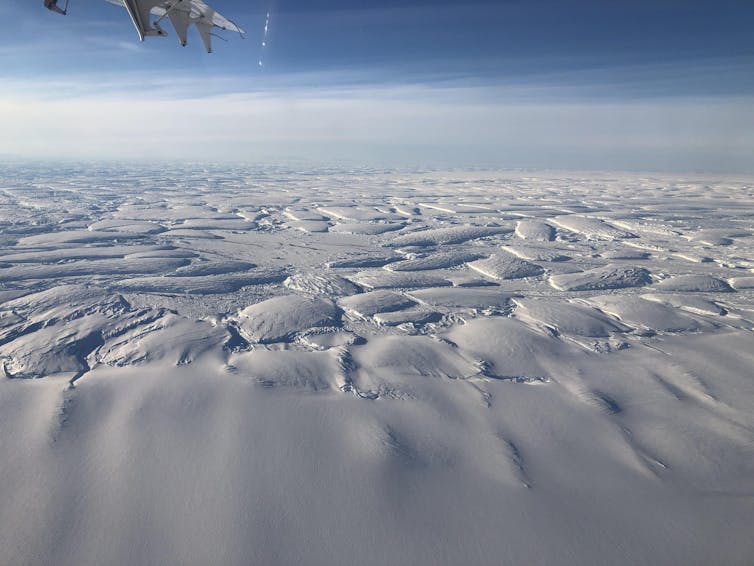
Antarctica is a continent comprising several large islands, one of them the size of Australia, all buried under a 10,000-foot-thick layer of ice. The ice holds enough fresh water to raise sea level by nearly 200 feet.
Its glaciers have always been in motion, but beneath the ice, changes are taking place that are having profound effects on the future of the ice sheet – and on the future of coastal communities around the world.
Breaking, Thinning, Melting, Collapsing
Antarctica is where I work. As a polar scientist I’ve visited most areas of the ice sheet in more than 20 trips to the continent, bringing sensors and weather stations, trekking across glaciers, or measuring the speed, thickness and structure of the ice.
Currently, I’m the U.S. coordinating scientist for a major international research effort on Antarctica’s riskiest glacier – more on that in a moment. I have gingerly crossed crevasses, trodden carefully on hard blue windswept ice, and driven for days over the most monotonous landscape you can imagine.
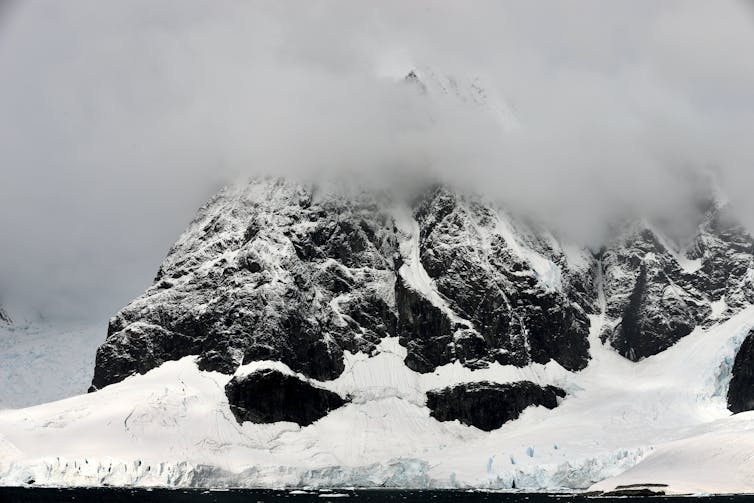
For most of the past few centuries, the ice sheet has been stable, as far as polar science can tell. Our ability to track how much ice flows out each year, and how much snow falls on top, extends back just a handful of decades, but what we see is an ice sheet that was nearly in balance as recently as the 1980s.
Early on, changes in the ice happened slowly. Icebergs would break away, but the ice was replaced by new outflow. Total snowfall had not changed much in centuries – this we knew from looking at ice cores – and in general the flow of ice and the elevation of the ice sheet seemed so constant that a main goal of early ice research in Antarctica was finding a place, any place, that had changed dramatically.
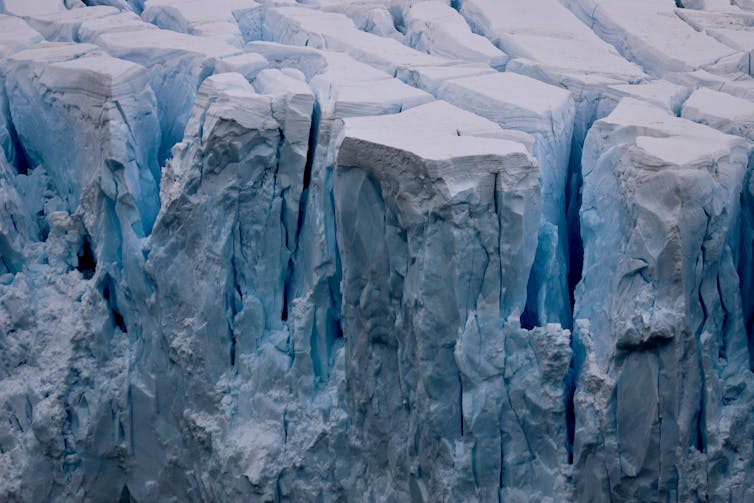

But now, as the surrounding air and ocean warm, areas of the Antarctic ice sheet that had been stable for thousands of years are breaking, thinning, melting, or in some cases collapsing in a heap. As these edges of the ice react, they send a powerful reminder: If even a small part of the ice sheet were to completely crumble into the sea, the impact for the world’s coasts would be severe.
Like many geoscientists, I think about how the Earth looks below the part that we can see. For Antarctica, that means thinking about the landscape below the ice. What does the buried continent look like – and how does that rocky basement shape the future of the ice in a warming world?
Visualizing The World Below The Ice
Recent efforts to combine data from hundreds of airplane and ground-based studies have given us a kind of map of the continent below the ice. It reveals two very different landscapes, divided by the Transantarctic Mountains.
In East Antarctica, the part closer to Australia, the continent is rugged and furrowed, with several small mountain ranges. Some of these have alpine valleys, cut by the very first glaciers that formed on Antarctica 30 million years ago, when its climate resembled Alberta’s or Patagonia’s. Most of East Antarctica’s bedrock sits above sea level. This is where the city-size Conger ice shelf collapsed amid an unusually intense heat wave in March 2022.
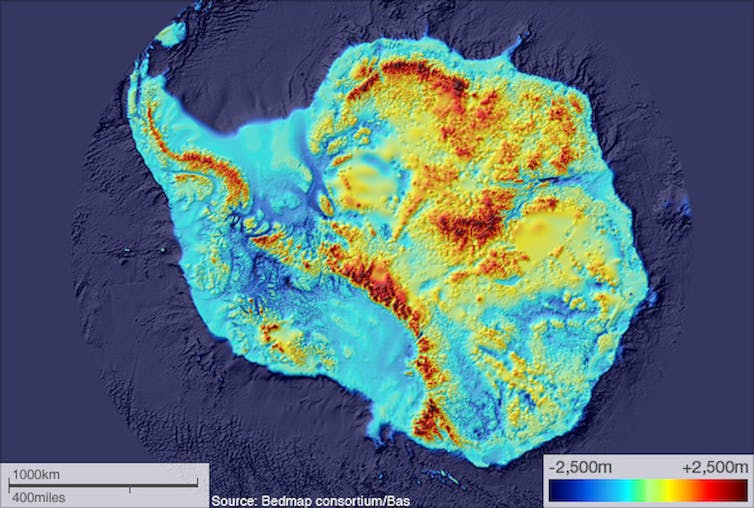
In West Antarctica the bedrock is far different, with parts that are far deeper. This area was once the ocean bottom, a region where the continent was stretched and broken into smaller blocks with deep seabed between. Large islands made of volcanic mountain ranges are linked together by the thick blanket of ice. But the ice here is warmer, and moving faster.
As recently as 120,000 years ago, this area was probably an open ocean – and definitely so in the past 2 million years. This is important because our climate today is fast approaching temperatures like those of a few million years ago.
The realization that the West Antarctic ice sheet was gone in the past is the cause of great concern in the global warming era.
Early Stages Of A Large-Scale Retreat
Toward the coast of West Antarctica is a large area of ice called Thwaites Glacier. This is the widest glacier on earth, at 70 miles across, draining an area nearly as large as Idaho.
Satellite data tell us that it is in the early stages of a large-scale retreat. The height of the surface has been dropping by up to 3 feet each year. Huge cracks have formed at the coast, and many large icebergs have been set adrift. The glacier is flowing at over a mile per year, and this speed has nearly doubled in the past three decades.
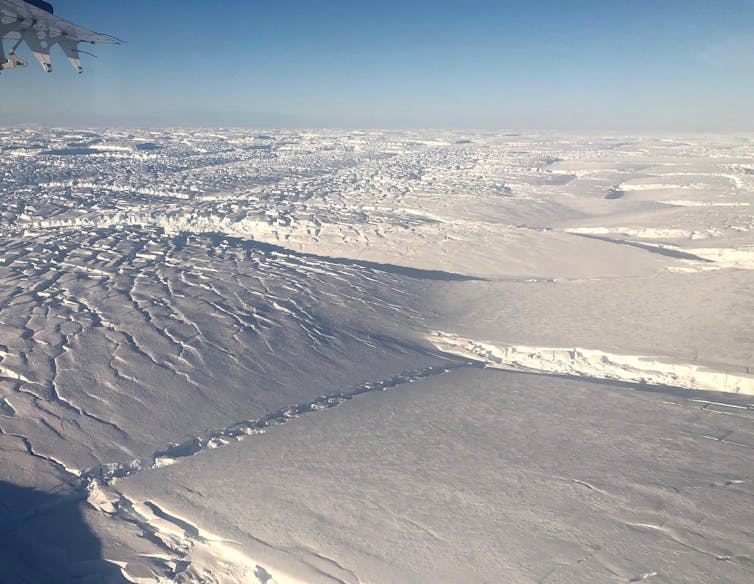
This area was noted early on as a place where the ice could lose its grip on the bedrock. The region was termed the “weak underbelly” of the ice sheet.
Some of the first measurements of the ice depth, using radio echo-sounding, showed that the center of West Antarctica had bedrock up to a mile and a half below sea level. The coastal area was shallower, with a few mountains and some higher ground; but a wide gap between the mountains lay near the coast. This is where Thwaites Glacier meets the sea.
This pattern, with deeper ice piled high near the center of an ice sheet, and shallower but still low bedrock near the coast, is a recipe for disaster – albeit a very slow-moving disaster.
Ice flows under its own weight – something we learned in high school earth science, but give it a thought now. With very tall and very deep ice near Antarctica’s center, a tremendous potential for faster flow exists. By being shallower near the edges, the flow is held back – grinding on the bedrock as it tries to leave, and having a shorter column of ice at the coast squeezing it outward.
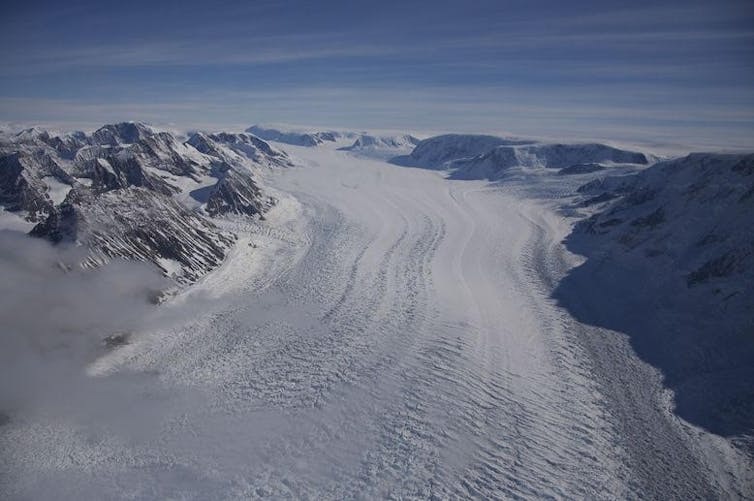
If the ice were to step back far enough, the retreating front would go from “thin” ice – still nearly 3,000 feet thick – to thicker ice toward the center of the continent. At the retreating edge, the ice would flow faster, because the ice is thicker now. By flowing faster, the glacier pulls down the ice behind it, allowing it to float, causing more retreat. This is what’s known as a positive feedback loop – retreat leading to thicker ice at the front of the glacier, making for faster flow, leading to more retreat.
Warming Water: The Assault From Below
But how would this retreat begin? Until recently, Thwaites had not changed a lot since it was first mapped in the 1940s. Early on, scientists thought a retreat would be a result of warmer air and surface melting. But the cause of the changes at Thwaites seen in satellite data is not so easy to spot from the surface.
Beneath the ice, however, at the point where the ice sheet first lifts off the continent and begins to jut out over the ocean as a floating ice shelf, the cause of the retreat becomes evident. Here, ocean water well above the melting point is eroding the base of the ice, erasing it as an ice cube would disappear bobbing in a glass of water.

Water that is capable of melting as much as 50 to 100 feet of ice every year meets the edge of the ice sheet here. This erosion lets the ice flow faster, pushing against the floating ice shelf.
The ice shelf is one of the restraining forces holding the ice sheet back. But pressure from the land ice is slowly breaking this ice plate. Like a board splintering under too much weight, it is developing huge cracks. When it gives way – and mapping of the fractures and speed of flow suggests this is just a few years away – it will be another step that allows the ice to flow faster, feeding the feedback loop.
Up To 10 Feet Of Sea Level Rise
Looking back at the ice-covered continent from our camp this year, it is a sobering view. A huge glacier, flowing toward the coast, and stretching from horizon to horizon, rises up to the middle of the West Antarctic Ice Sheet. There is a palpable feeling that the ice is bearing down on the coast.
Ice is still ice – it doesn’t move that fast no matter what is driving it; but this giant area called West Antarctica could soon begin a multicentury decline that would add up to 10 feet to sea level. In the process, the rate of sea level rise would increase severalfold, posing large challenges for people with a stake in coastal cities. Which is pretty much all of us.![]()
Ted Scambos, Senior Research Scientist, CIRES, University of Colorado Boulder
This article is republished from The Conversation under a Creative Commons license. Read the original article.
Drones and DNA tracking: we show how these high-tech tools are helping nature heal

Technology has undoubtedly contributed to global biodiversity loss and ecosystem degradation.
Where forests once stood, artificial lights now illuminate vast urban jungles. Where animals once roamed, huge factories now churn out microchips, computers, and cars. But now, we can also leverage technology to help repair our precious ecosystems.
Here, we discuss our two new research papers published today. They show how drones and genomics (the same technology used to identify COVID strains) can help protect and restore nature.
One paper demonstrates that drones can help safeguard biodiversity and monitor ecosystem restoration activities. They can also help us understand how impacts in one ecosystem may affect another.
Genomics can help identify populations that may be vulnerable to future climate change, and monitor elusive animals such as platypuses, lynx, and newts. Yet, our other paper found ecologists without genomics expertise thought the technology still needed to be tried and tested.
Remote Sensing With Drones
Drones are an increasingly common sight in, for instance, urban parks and weddings. Farmers also use them to assess crop health, and engineers use them to detect damage to bridges and wind turbines.
Drone technology has rapidly advanced over the last decade. Advancements include obstacle avoidance, enhanced flight times, high-definition cameras, and the ability to carry heavier payloads.
But can drones help repair damaged ecosystems? We reviewed the scientific literature from various environmental sectors to explore the existing and emerging uses of drones in restoring degraded ecosystems. The answer, we found, is a resounding “yes”.
We found drones can help map vegetation and collect water, soil, and grassland samples. They can also monitor plant health and wildlife population dynamics. This is essential for understanding whether a restoration intervention is working.
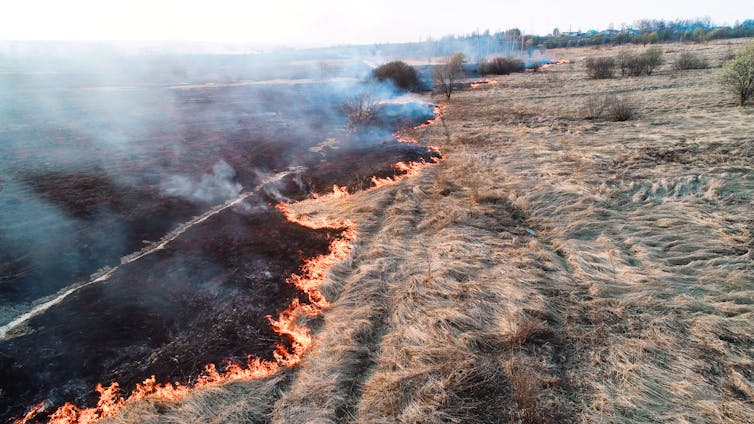
In Australia, for instance, drones have helped researchers identify the habitat requirements for marsupials such as the spotted-tailed quoll and the eastern bettong. Thanks to having the drone’s birds-eye view, researchers and practitioners are gaining a better understanding of what vegetation to restore as well as new approaches to monitor the return of critical habitat.
Famously, drones have recently been used to plant trees by dropping “seed bombs” to help restore forests. While drone-based tree planting has potential, it still requires more research as the survival rate of seedlings is currently poor.
Some researchers have even developed bushfire-fighting drones to protect sensitive ecosystems. This is where one drone detects fire using thermal technology, and another puts it out by dropping fire-extinguishing balls. But controlled wildfires can sometimes be vital to ecosystem restoration, so we can also use drones to drop tiny fireballs, too.
However, there are many pitfalls to consider when using drones. In the wrong hands, drones can be a nuisance and harm wildlife.
Studies have shown flying too close to animals, such as birds and bears can impact their physiology. For example, a 2015 study showed drones flying too close to American black bears caused their heart rates to rise – even for one bear deep in hibernation.
Drone pilots should acquire appropriate licences and follow strict protocols when flying them in sensitive habitats.

Genomics: Valuable, Yet Misunderstood
Genomics is a toolkit jam-packed full of innovative ways of looking at DNA, the blueprint of life on Earth. When scientists talk about genomics, they usually refer to modern DNA sequencing technologies or the analysis of vast collections of DNA.
But despite the potential for genomics to improve ecosystem restoration, our recent study showed restoration scholars without genomics experience were concerned genomics was over-hyped.
We interviewed leading experts in different ecology disciplines and found many called for case studies to demonstrate the benefits of genomics in restoration.
But surprisingly, we found restoration genomics literature included over 70 restoration genomics studies, many of which used environmental DNA to monitor ecosystem health. So, plenty of case studies already exist.
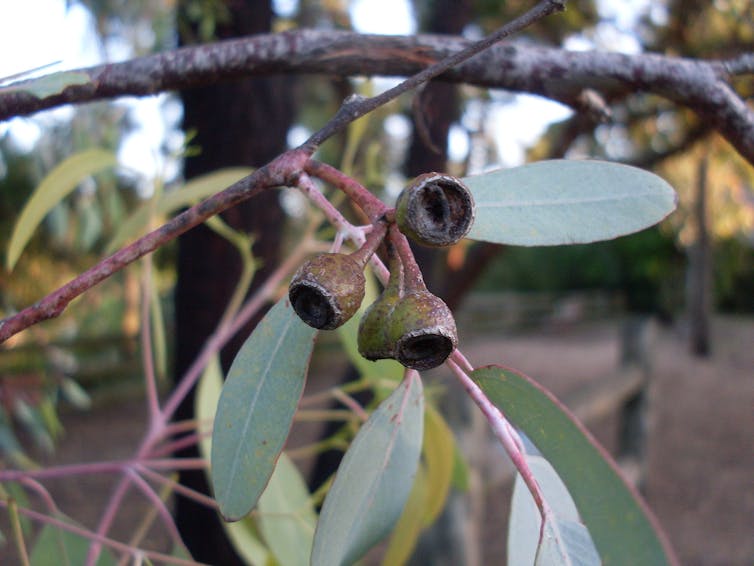
In ecosystem restoration, the two most common genomics applications are population genomics and environmental DNA.
Population genomics studies small differences in an organism’s genome to answer questions such as how much genetic variation exists in a population, how related individuals are, or how landscapes change migration patterns.
Linking changes in DNA sequences to historical climates has become central to modern-day nature conservation and restoration. It allows us to understand how resilient animals, plants and microbes are to future climates.
For example, we have used this approach to select robust tree seeds, such as red ironbark (Eucalyptus tricarpa), for woodland restoration plantings across southeast Australia. Using genomics to select the most resilient seeds gives the trees the best chance of surviving in a changing climate.
Scientists can also gain insights into ecosystems and monitor elusive species using the DNA organisms leave behind in environments, such as soil or water.
This environmental DNA data can help track the presence of species — invasive, endangered, or cryptic — and help measure community health and diversity. This includes pollinators such as bees, other animals and plants and our invisible friends, the microbes.
For instance, in the United Kingdom, ecologists currently use environmental DNA to detect the presence of vulnerable amphibians, such as great crested newts.

Where To From Here?
Greater uptake of remote sensing and genomics in restoration has clear potential to help improve the monumental task of restoring our degraded ecosystems. Our papers outline ways for restoration ecologists to integrate drones and genomics into their toolboxes.
Given humans have caused substantial degradation to global ecosystems, it makes sense to use the technologies now available to restore wildlife and prevent additional biodiversity loss.![]()
Jake M Robinson, Ecologist and Researcher, Flinders University; Jakki Mohr, Professor of Marketing & Innovation, The University of Montana; Martin Breed, Senior Lecturer in Biology, Flinders University; Peter Harrison, Lecturer in Forest Adaptation and Restoration Genetics, University of Tasmania, and Suzanne Mavoa, , The University of Melbourne
This article is republished from The Conversation under a Creative Commons license. Read the original article.
Research shows tropical cyclones have decreased alongside human-caused global warming – but don’t celebrate yet
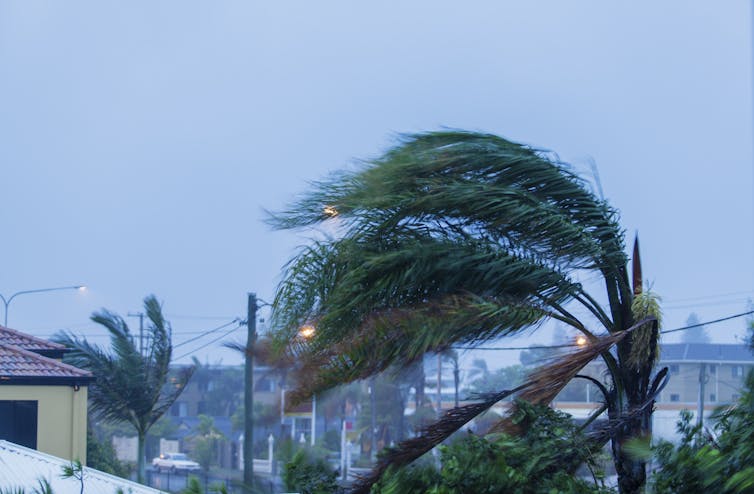
The annual number of tropical cyclones forming globally decreased by about 13% during the 20th century compared to the 19th, according to research published today in Nature Climate Change.
Tropical cyclones are massive low-pressure systems that form in tropical waters when the underlying environmental conditions are right. These conditions include (but aren’t limited to) sea surface temperature, and variables such as vertical wind shear, which refers to changes in wind speed and direction with altitude.
Tropical cyclones can cause a lot of damage. They often bring extreme rainfall, intense winds and coastal hazards including erosion, destructive waves, storm surges and estuary flooding.
The Intergovernmental Panel on Climate Change’s latest report detailed how human emissions have warmed tropical oceans above pre-industrial levels, with most warming happening since around the middle of the 20th century. Such changes in sea surface temperature are expected to intensify storms.
At the same time, global warming over the 20th century led to a weakening of the underlying atmospheric conditions that affect tropical cyclone formation. And our research now provides evidence for a decrease in the frequency of tropical cyclones coinciding with a rise in human-induced global warming.
Reckoning With A Limited Satellite Record
To figure out whether cyclone frequency has increased or decreased over time, we need a reliable record of cyclones. But establishing this historical context is challenging.
Before the introduction of geostationary weather satellites in the 1960s (which stay stationary in respect to the rotating Earth), records were prone to discontinuity and sampling issues.

And although observations improved during the satellite era, changes in satellite technologies and monitoring throughout the first few decades imply global records only became consistently reliable around the 1990s.
So we have a relatively short post-satellite tropical cyclone record. And longer-term weather trends based on a short record can be obscured by natural climate variability. This has led to conflicting assessments of tropical cyclone trends.
Declining Global And Regional Trends
To work around the limits of the tropical cyclone record, our team used the Twentieth Century Reanalysis dataset to reconstruct cyclone numbers to as far back as 1850. This reanalysis project uses detailed metrics to paint a picture of global atmospheric weather conditions since before the use of satellites.
Drawing on a link to the observed weakening of two major atmospheric circulations in the tropics – the Walker and Hadley circulations – our reconstructed record reveals a decrease in the annual number of tropical cyclones since 1850, at both a global and regional scale.
Specifically, the number of storms each year went down by about 13% in the 20th century, compared to the period between 1850 and 1900.
For most tropical cyclone basins (regions where they occur more regularly), including Australia, the decline has accelerated since the 1950s. Importantly, this is when human-induced warming also accelerated.
The only exception to the trend is the North Atlantic basin, where the number of tropical cyclones has increased in recent decades. This may be because the basin is recovering from a decline in numbers during the late 20th century due to aerosol impacts.
But despite this, the annual number of tropical cyclones here is still lower than in pre-industrial times.
It’s A Good Thing, Right?
While our research didn’t look at cyclone activity in the 21st century, our findings complement other studies, which have predicted tropical cyclone frequency will decrease due to global warming.
It may initially seem like good news fewer cyclones are forming now compared to the second half of the 19th century. But it should be noted frequency is only one aspect of risk associated with tropical cyclones.
The geographical distribution of tropical cyclones is shifting. And they’ve been getting more intense in recent decades. In some parts of the world they’re moving closer to coastal areas with growing populations and developments.
These changes – coupled with increasing rain associated with tropical cyclones, and a trend towards hurricanes lasting longer after making landfall – could point to a future where cyclones cause unprecedented damage in tropical regions.
Then again, these other factors weren’t assessed in our study. So we can’t currently make any certain statements regarding future risk.
Moving forward, we hope improvements in climate modelling and data will help us identify how human-induced climate change has affected other metrics, such as cyclone intensity and landfalling activity.![]()
Savin Chand, Senior Lecturer, Applied Mathematics and Statistics, Federation University Australia
This article is republished from The Conversation under a Creative Commons license. Read the original article.
Hear me out – we could use the varroa mite to wipe out feral honey bees, and help Australia’s environment
Patrick O'Connor, University of AdelaideA tiny parasitic mite that lives on the European honeybee (Apis mellifera) has breached Australia’s border quarantine and been detected in managed bee hives in New South Wales.
This is bad news for Australia’s honey industry, with over 300 hives in Newcastle set to be destroyed and biosecurity zones in place. The potential economic impact to the honey industry is estimated at around A$70 million per year, but the broader impacts to agriculture are not yet known.
This is where much of the dialogue on the impact of varroa mite settling in Australia usually stops. But there’s another way to look at this pest: as an effective biocontrol for feral honeybees in Australia’s natural environment.
Honeybees were introduced to Australia almost 200 years ago and out-compete native pollinators, which may have dire flow-on effects for ecosystems. The varroa mite’s arrival in Australia was only a matter of time – and with better planning, we could benefit from one pest fighting another.
Making Trade-Offs
The varroa mite infests hives, parasitises the bees, and can spread viruses and other pathogens. They mainly feed and breed on honeybee larvae and pupae, causing malformation. If left unmanaged, heavy mite infestation can cause colony collapse in some circumstances.
The mite has spread across the world to colonise almost every known location of European honeybees. It has been kept out of Australia thanks to stringent border quarantine measures, but this tiny mite can easily hitchhike on imports, then establish and spread when it reaches a honeybee colony.
So would Australia benefit more from treating the varroa mite as a pest, or an environmental biocontrol? More research is needed to resolutely answer this question, but let’s look at a the potential trade-offs of either option.
Treating the mite as a pest
Treating the mite as a pest would mean chasing down known outbreaks and destroying hives, beefing up border quarantine measures and supporting the beekeeping industry to tide them over the impact and adjustment period.
Beekeepers can stop the mite in its tracks in managed hives with chemical controls, but this comes at a cost, including some loss of productivity. And a loss of productivity in managed hives can have a knock-on effect on the pollination industry, as beekeepers are paid to take their bees to pollinate crops.
Thirty-five agricultural industries in Australia rely entirely or in part on bee pollination, including almonds, apples and cherries. Indeed, the total contribution of honeybees to Australia’s economy is estimated at $14.2 billion.
The potential consequences for industrial beekeeping and agriculture, and increased costs of production, can have unwelcome effects on food prices.
Treating the mite as a biocontrol
Treating the mite as an environmental biocontrol would mean diverting money for eradication and control measures to help industries live with varroa. This could be by, for instance, increasing the use of native pollinators for Australian agriculture.
It could also involve releasing the mite into feral honeybee hives, where we believe a rapid recovery of native pollinators is needed, such as in areas recovering from bushfires. The varroa mite has little impact on native bees because it’s specific to the Apis genus of the introduced bee, though the usual rules for biocontrol release would need to be followed.
Feral European honeybee populations are recognised as a key threatening process to Australia’s native biodiversity, with impacts felt across the country. Feral bees are abundant and efficient pollinators, and compete with native birds, insects and mammals (such as pygmy possums) for nectar from flowers.
Honeybees avoid, or only partially pollinate, some native plants. This means a high concentration of honeybees could shift the make-up of native vegetation in a region. They also pollinate invasive weeds such as gorse, lantana and scotch broom, which are particularly expensive to control in the wake of bushfires.
When the varroa mite breached New Zealand, feral honeybees declined by about 90% within a few years. However, there’s limited information about the ecological benefits of this, because the data was not collected while the focus was on agricultural industry impact.
It’s also worth noting that knocking down feral honeybees could also be good for the honeybee industry, as feral honeybees are a recognised competitor with commercial ones.
Making The Best Decision
Questions about trading-off potential agricultural costs for environmental benefits are difficult to answer. This is, in part, because any environmental benefits gained from reducing a widespread threat are usually indirect, such as flow-on effects of increased ecosystem health.
Another reason is because markets are well established for agricultural products and services, but they’re usually missing or only just forming for ecosystem services (such as flood control, water supply and quality, and cultural values).
To calculate the economic benefit of reducing feral honeybees, we first must put a value on the services natural ecosystems provide.
While some steps have been made, progress on implementation has been slow for the last decade. So far, we’ve predominately put values on ecosystem services from discrete natural assets, such as the Great Barrier Reef, which contributed an estimated $6.4 billion in 2015-2016 to Australia’s economy.
In the case of the varroa mite, we have known the potential for opportunities and costs from a likely invasion for more than a decade. But the focus has been on preventing the invasion to protect agriculture, because we’re mostly concerned about the industry’s direct benefits and impacts.
There have been no estimations of the economic benefits of using the mite as an environmental biocontrol to lower feral honeybee populations, even though our New Zealand friends did suggest, in a paper, we prepare ourselves.
We may successfully eradicate the varroa mite’s recent incursion to the relief of agriculture and beekeepers. But given the near inevitability of the mite establishing in Australia, we must invest in better understanding the holistic economics of keeping a potentially very important biocontrol out of the country.![]()
Patrick O'Connor, Associate Professor, University of Adelaide
This article is republished from The Conversation under a Creative Commons license. Read the original article.
Australia can help ensure the biggest mine in PNG’s history won’t leave a toxic legacy

The COVID pandemic slowed mining activity across the Pacific. But as economic activity returns, an Australia-based company is poised to pursue what would be the largest mine in Papua New Guinea’s history.
The vast gold and copper project, known as the Frieda River mine, would also include a hydroelectric plant and a dam with a storage capacity for around 4.6 billion tonnes of mine tailings and waste rock.
The project is awaiting approval by the PNG government. However, locals, conservationists and experts say it could cause catastrophic harm to one of the world’s most important river systems and should not proceed as proposed.
Australia is PNG’s largest development partner. As resource extraction expands across the Pacific, the new Labor government is well placed to help our neighbours ensure mining activity doesn’t harm people or the environment.

Remote, Unstable Terrain
The Frieda River mine is proposed by Brisbane-based, Chinese-owned company Pan Aust.
The project centres on the Frieda River copper-gold deposit located in the tropical mountain ranges of northwest PNG.
The river flows into the Sepik River Basin, one of the world’s great river systems. It’s the largest unpolluted freshwater system in New Guinea and among the largest freshwater basins in the Asia-Pacific.
The Frieda River deposit was discovered in the 1960s. It lies in extremely remote terrain, along the Pacific Ring of Fire which is prone to seismic activity.
The mine would produce tailings (or waste materials) containing sulphide, which turns into sulphuric acid when exposed to oxygen. For this reason, the tailings must be permanently covered by water.
The proposed mine’s location, high in the mountains, means a tailings accident could devastate the entire Sepik River Basin.
About 430,000 people depend on the Sepik River and nearby forests for their livelihood. The proposal has galvanised massive opposition from both locals and others.
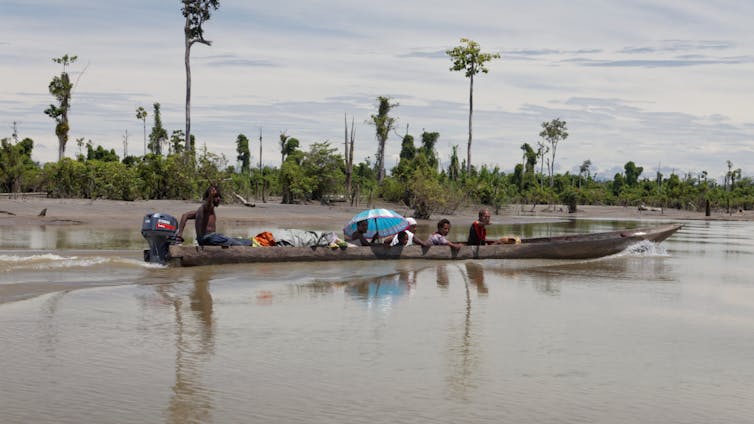
Downplaying The Risks
In 2020, ten independent experts including myself, were commissioned by PNG’s Centre for Environmental Law and Community Rights to individually review the project’s “environmental impact statement”. The work was undertaken pro bono.
I’m an experienced gold exploration geologist and environmental scientist. In my review, I found the statement downplayed or obscured the proposal’s extraordinary level of risk.
First, it omitted a report by design engineers that analysed the extreme consequences of dam failure.
Second, the main report failed to mention the dam would need an intensive inspection and maintenance regime “in perpetuity”. In other words, a potentially toxic dam in a remote part of a very poor country requires highly skilled and experienced professionals to maintain it – not just for the 33-year life of the mine, but forever.
Our reports prompted a group of UN Special Rapporteurs to write letters of concern to the governments of PNG, Australia, China and Canada, where companies involved in the joint venture have ties.
The letters said the mine’s development appeared to “disregard the human rights of those affected … given the nature of the project it could undermine the rights of Sepik children to life, health, culture, and a healthy environment, including the rights of unborn generations.”
The Conversation contacted Pan Aust for a response to these claims. In a statement, the company said it was “respectfully engaged in the Government of Papua New Guinea’s approvals process” and as such, it was inappropriate to provide a public comment.
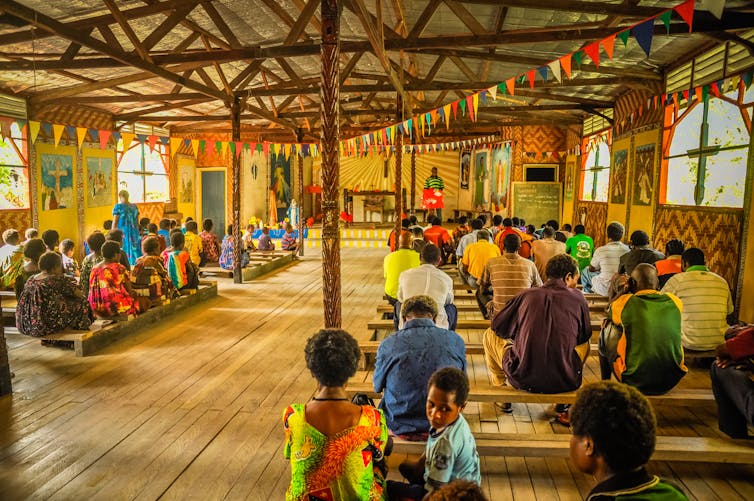
New Safeguards Are Needed
Inadequate consideration of a mine’s social and environmental impact is rife cross the Pacific. And PNG provides many examples of the catastrophes that can result.
Tailings from BHP’s ill-fated Ok-Tedi mine, located in the same mountain range as the proposed Frieda River mine, severely damaged nearby rivers.
And environmental damage from the Panguna copper mine was a key factor in community unrest and the Bougainville civil war.
Recent research into governance of mining in PNG found government agencies were under-resourced, leaving “companies as effectively self-regulating”.
Proponents of mining in PNG frequently cite its contribution to economic development. But for the benefits to be realised, resources must be extracted in a way that is environmentally, socially and economically sustainable.
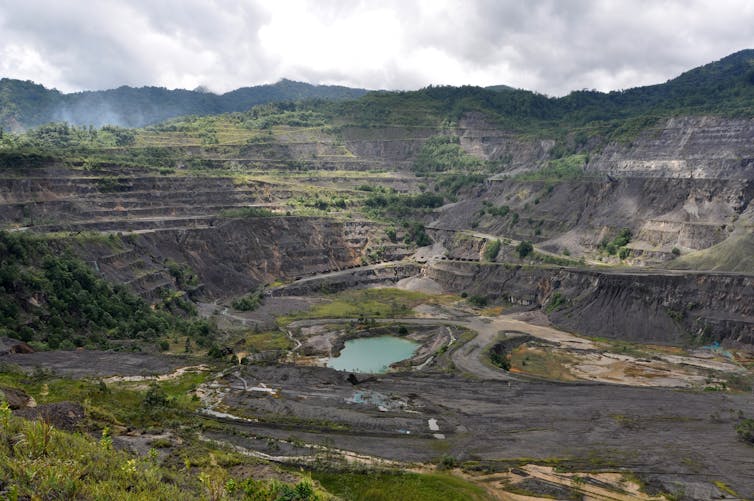
New laws are needed to ensure resource extraction projects in PNG don’t cause long-lasting social and environmental damage. This should include mandatory, transparent and independent reviews of projects.
Australia has extensive experience with environmental regulation of mining projects and can assist in this regard. Such assistance should be delivered in a way that strengthens relations between Australia and PNG, and empowers and equips the smaller nation.
Sustainable development for our Pacific neighbours is in Australia’s strategic interests. Australian companies often benefit significantly from resource extraction in PNG, creating an extra responsibility to ensure better outcomes.![]()
Michael Main, Visiting Scholar, Australian National University
This article is republished from The Conversation under a Creative Commons license. Read the original article.
Coastal gentrification in Puerto Rico is displacing people and damaging mangroves and wetlands

As world travel rebounds after two years of COVID-19 shutdowns and restrictions, marketers and the media are promoting Puerto Rico as an accessible hot spot destination for continental U.S. travelers. The commonwealth set a visitor record in 2021, and it is expanding tourism-related development to continue wooing travelers away from more exotic destinations.
Tourism income is central to Puerto Rico’s economy, especially in the wake of heavy damage from Hurricane Maria in 2017. But it comes at a cost: destruction of mangroves, wetlands and other coastal areas. Puerto Rico is no stranger to resort construction, but now widespread small-scale projects to meet demand for rentals on platforms like Airbnb are adding to concerns about coastal gentrification and touristification.
As scholars who study anthropology and coastal communities, we believe it is important to understand what Puerto Rico is losing in the quest for ever-increasing tourist business. For the rural coastal communities where we do our research, habitat is tied to residents’ cultural identity and economic well-being.
For the last two decades, we have documented how many rural Puerto Ricans’ lives are inextricably linked to coastal forests and wetland habitats. These communities often are poor, neglected by the state and disproportionately affected by pollution and noxious industries. Decisions about the future of the coast too often are made without accounting for human impacts.
Once-Scorned Areas Are Now In Demand
Estuaries and coastal forests are some of Earth’s most biodiverse and productive ecosystems. Millions of people rely on mangroves and coastal wetlands to make a living.
Around the world, these areas are under stress from climate change, tourism and luxury residential development. But these zones weren’t always prized so highly.
In Puerto Rico and elsewhere in the Americas, wetlands historically were seen as undesirable and even dangerous places to live and work. They often were settled by the poor and dispossessed, most notably Afro-descendant people and Indigenous communities, who made livings fishing, foraging, harvesting coconuts, cutting wood and making charcoal.
In the early 20th century, however, tropical coasts started attracting attention from the global leisure class. In 1919, the Vanderbilt Hotel opened in San Juan, followed in 1949 by the massive Caribe Hilton resort – the first Hilton hotel outside the continental U.S., built in partnership with the Puerto Rican government. Many more hotels followed, along with casinos and golf courses.
Today, Puerto Rico’s rural coastal communities have to compete for space and resources against tourism development, gentrification, urbanization, industry and conservation. Often these uses are not compatible with local lifestyles.
For example, people from communities near mangrove forests, like Las Mareas in southern Puerto Rico, are no longer permitted to harvest small amounts of mangrove wood to build traditional fishing boats. At the same time, they see wealthy residents and developers destroying entire tracts of mangrove forest with impunity. Some coastal communities are starting to push back.
Beaches Are For The People
In March 2022, Eliezer Molina, an environmental activist, engineer and 2020 gubernatorial candidate, posted an exposé on YouTube of the illegal cutting and filling of a mangrove shoreline in the Las Mareas neighborhood in Salinas’ Jobos Bay. As Puerto Rico’s second-largest estuary and only Federal Estuarine Reserve, the bay is an important and sensitive habitat for birds, turtles and manatees, and a nursery for many types of fish.
Wealthy Puerto Ricans clandestinely developed this waterfront site for weekend homes. Residents of Las Mareas had been alerting local authorities for well over a decade about destruction of the mangroves, to no avail. Federal authorities and Puerto Rico’s Justice Department are now conducting a criminal investigation of the illegal construction.
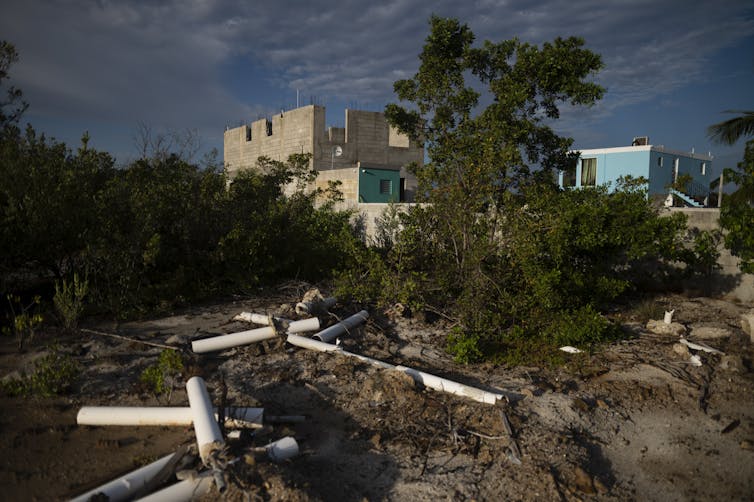
This case led to widespread public outrage about similar instances around the archipelago. Puerto Ricans are condemning local government agencies online and in person for what they describe as incompetence, corruption and a lack of monitoring and oversight.
One hot-button issue is privatization and destruction of the Zona Marítimo Terrestre, or Terrestrial Maritime Zone. This area is legally defined as “Puerto Rico’s coastal space that is bordered by the sea’s ebb and flow” – that is, between the low and high tide or up to the highest point of the surf zone. It includes beaches, mangroves and other coastal wetlands, and is publicly owned.

Activists are urging Gov. Pedro Pierluisi to declare a comprehensive moratorium on all coastal construction, a demand the governor calls “excessive.” A popular protest slogan, “Las playas son del pueblo!” (“Beaches belong to the people”), aptly summarizes popular feeling.
Overlooked Value
Coastal development generates a lot of money in Puerto Rico, but what is gained by conserving these areas for use by local communities? In research that we carried out in 2010-2013 and 2016-2021, we found that coastal resources provide many benefits for local residents that are not easily replaced.
Our results show that about one-third of households in these communities rely on coastal goods for at least part of their income, while more than two-thirds rely on them as food sources. Local harvesters supply family-owned seafood restaurants with foods such as land crabs, helping to attract economic activity to the coast.

We also found that residents rely more heavily on local coastal foods during times of severe economic stress, such as recessions and natural disasters. In the aftermath of Hurricanes Irma and María, for example, many residents in the southern towns of Salinas and Santa Isabel harvested unusually abundant land crabs when it was hard to find other foods. Some even saw this abundance as divine restitution for the suffering the storm inflicted on them.
Local economies in these communities consist mainly of small-scale, community-based transactions that include gifting, bartering and selling. Their social and economic impacts often go unnoticed and are underestimated in official economic accounts, so they aren’t reflected in decisions about coastal development. But as our work shows, coastal ecosystems are ecologically, economically and socially productive places.
In 2010, we asked people living along Puerto Rico’s southern coast: “What would your community look like without access to the mangrove and its bounties?” The owner of a family restaurant, replied: “The answer is easy. Without access to coastal resources, this community would be dead and sad.”![]()
Carlos G. García-Quijano, Professor of Anthropology and Marine Affairs, University of Rhode Island and Hilda Lloréns, Associate Professor, Anthropology & Marine Affairs, University of Rhode Island
This article is republished from The Conversation under a Creative Commons license. Read the original article.
Here’s how to meet Biden’s 2030 climate goals and dramatically cut greenhouse gas emissions – with today’s technology

Unprecedented forest fires in the drought-stricken western United States. Tropical storms and rising seas threatening the Gulf and Atlantic coasts. Sizzling heat across large swaths of the country. As climate change unfolds before our eyes, what can the U.S. do to sharply and rapidly reduce its share of the greenhouse gas emissions that are causing it?
The Biden administration has committed to reduce those emissions 50% by 2030 below 2005 levels. That’s a critical first step of a global energy transition that must achieve net-zero emissions by midcentury to limit warming to 1.5 degrees Celsius (2.7 F) and thereby avert the worst impacts of climate change.
Twenty years ago, I would have regarded the U.S. 2030 pledge as crazy talk. But a new study in the journal Science that I co-authored, which compares results from six independent analyses conducted by academic, industry and nongovernmental organization researchers, lays out a road map to the 50% target that’s both doable and affordable.
So, what’s changed since the early 2000s?

Back then it seemed that without major policy measures, U.S. greenhouse gas emissions would continue to rise indefinitely. However, inexpensive natural gas and falling costs of solar and wind power, combined with some modest state and federal renewable energy programs, resulted in a more than 20% reduction in annual emissions between 2005 and 2020.
With that reduction under our belts, reaching the 2030 target will require a further reduction of about 37% from current levels. That puts the target closer, but it’s still a bigger drop in 10 years than the U.S. achieved over the past 15 years.
Our study shows that by exploiting declining costs of zero- and low-carbon energy sources in a more aggressive and focused way, the U.S. can meet its target within eight years – all while substantially reducing its dependence on fossil fuels, including high-priced gasoline, and cutting back the air pollution, climate and health impacts resulting from their combustion.
A New Road Map For The US Energy Transition
While there are differences among the six analyses in our study, all find that most of the needed emissions reductions – about 70% to 90% – can come from the electric power and transportation sectors. These can be achieved through a further transition to solar and wind power as costs for those technologies continue to drop.
Solar and wind can’t do it all; we found that natural gas – some of it accompanied by technology that captures the carbon emissions released during its combustion – and nuclear power and hydropower can play supporting roles.
Much of the needed emissions reductions – about 10% to 25% – can be achieved through a rapid transition to electric light-duty vehicles along with additional reductions from freight transportation. Our study shows that electric vehicles, which accounted for about 4% of new car sales in the U.S. in 2021, would need to rise to between 34% and 100% of sales by 2030 to meet that target. That’s a huge jump. But it now appears that battery costs have fallen enough to allow production of EVs at a cost equivalent to that of conventional vehicles. Moreover, EVs are typically cheaper to operate and maintain, further reducing total ownership costs.
While our study finds that most of the needed emission reductions can come from electric power and transportation, other sectors of the economy – including industry, agriculture and buildings – must also shift to low- and zero-carbon energy sources to meet the 2030 goal. The key challenges for these sectors include developing technology to eliminate emissions from energy-intensive processes, such as chemical, iron and steel production, and retrofitting existing homes and businesses with electric heat pumps in a timely manner.
That’s a lot to accomplish in just eight years. It will require an unprecedented buildout of electric power production and transmission capacity, a rapid ramp-up of electric vehicle production and sales, and a nationwide deployment of EV recharging stations.
Climate And Health Benefits
At the same time, by helping to avoid the worst effects of climate change, implementing this road map would reduce the national cost of damage from climate change while encouraging innovation. And significantly reducing air pollution resulting from fossil fuel combustion would also reduce related health costs.
For example, the smog produced by fossil fuel combustion exacerbates asthma and related respiratory diseases, leading to premature deaths. Some of the six analyses we reviewed found that the reduction in premature deaths – which equate to lost productivity and additional health costs – from reduced fine particulates in the air was by itself enough to offset the cost of implementing the U.S. energy transition road map described in the study.
Policy Options
Given the scale and pace of the transformations needed to reach the U.S. 2030 climate target, action must be taken immediately and sustained throughout the decade to succeed. Many states have already made strong commitments and implemented policies to achieve them, but a coordinated national strategy is needed.
The six analyses we reviewed assume different combinations of strategies, including tax incentives, subsidies, regulations and carbon pricing. Each approach has its pluses and minuses, but any successful policy must focus on affordable and equitable solutions and recognize that one size does not fit all. For example, transportation solutions in rural areas will likely differ from those appropriate in dense urban areas, and new construction may sometimes be more cost-effective than retrofitting older buildings.
The Biden administration’s proposed way forward, the Build Back Better plan targeting funding to help communities build resilience to the impacts of climate change and expand clean energy, is stalled in Congress. Meanwhile, the clock is ticking.![]()
John Reilly, Co-Director Emeritus of the MIT Joint Program on the Science and Policy of Global Change, Senior Lecturer Emeritus at the MIT Sloan School of Management, Massachusetts Institute of Technology (MIT)
This article is republished from The Conversation under a Creative Commons license. Read the original article.
Pittwater Reserves: Histories + Notes + Pictorial Walks
A History Of The Campaign For Preservation Of The Warriewood Escarpment by David Palmer OAM and Angus Gordon OAM
America Bay Track Walk - photos by Joe Mills
An Aquatic June: North Narrabeen - Turimetta - Collaroy photos by Joe Mills
Angophora Reserve - Angophora Reserve Flowers
Annie Wyatt Reserve - A Pictorial
Avalon's Village Green: Avalon Park Becomes Dunbar Park - Some History + Toongari Reserve and Catalpa Reserve
Bairne Walking Track Ku-Ring-Gai Chase NP by Kevin Murray
Bangalley Headland Bangalley Mid Winter
Banksias of Pittwater
Barrenjoey Boathouse In Governor Phillip Park Part Of Our Community For 75 Years: Photos From The Collection Of Russell Walton, Son Of Victor Walton
Barrenjoey Headland: Spring flowers
Barrenjoey Headland after fire
Bayview Baths
Bayview Wetlands
Beeby Park
Bilgola Beach
Botham Beach by Barbara Davies
Bungan Beach Bush Care
Careel Bay Saltmarsh plants
Careel Bay Birds
Careel Bay Clean Up day
Careel Bay Playing Fields History and Current
Careel Creek
Careel Creek - If you rebuild it they will come
Centre trail in Ku-ring-gai Chase National Park
Chiltern Track- Ingleside by Marita Macrae
Clareville Beach
Clareville/Long Beach Reserve + some History
Coastal Stability Series: Cabbage Tree Bay To Barrenjoey To Observation Point by John Illingsworth, Pittwater Pathways, and Dr. Peter Mitchell OAM
Cowan Track by Kevin Murray
Curl Curl To Freshwater Walk: October 2021 by Kevin Murray and Joe Mills
Currawong and Palm Beach Views - Winter 2018
Currawong-Mackerel-The Basin A Stroll In Early November 2021 - photos by Selena Griffith
Currawong State Park Currawong Beach + Currawong Creek
Deep Creek To Warriewood Walk photos by Joe Mills
Drone Gives A New View On Coastal Stability; Bungan: Bungan Headland To Newport Beach + Bilgola: North Newport Beach To Avalon + Bangalley: Avalon Headland To Palm Beach
Duck Holes: McCarrs Creek by Joe Mills
Dunbar Park - Some History + Toongari Reserve and Catalpa Reserve
Dundundra Falls Reserve: August 2020 photos by Selena Griffith - Listed in 1935
Elsie Track, Scotland Island
Elvina Track in Late Winter 2019 by Penny Gleen
Elvina Bay Walking Track: Spring 2020 photos by Joe Mills
Elvina Bay-Lovett Bay Loop Spring 2020 by Kevin Murray and Joe Mills
Fern Creek - Ingleside Escarpment To Warriewood Walk + Some History photos by Joe Mills
Iluka Park, Woorak Park, Pittwater Park, Sand Point Reserve, Snapperman Beach Reserve - Palm Beach: Some History
Ingleside
Ingleside Wildflowers August 2013
Irrawong - Ingleside Escarpment Trail Walk Spring 2020 photos by Joe Mills
Irrawong - Mullet Creek Restoration
Katandra Bushland Sanctuary - Ingleside
Lucinda Park, Palm Beach: Some History + 2022 Pictures
McCarrs Creek
McCarr's Creek to Church Point to Bayview Waterfront Path
McKay Reserve
Mona Vale Beach - A Stroll Along, Spring 2021 by Kevin Murray
Mona Vale Headland, Basin and Beach Restoration
Mount Murray Anderson Walking Track by Kevin Murray and Joe Mills
Mullet Creek
Narrabeen Creek
Narrabeen Lagoon Catchment: Past Notes Present Photos by Margaret Woods
Narrabeen Lagoon State Park
Narrabeen Lagoon State Park Expansion
Narrabeen Rockshelf Aquatic Reserve
Nerang Track, Terrey Hills by Bea Pierce
Newport Bushlink - the Crown of the Hill Linked Reserves
Newport Community Garden - Woolcott Reserve
Newport to Bilgola Bushlink 'From The Crown To The Sea' Paths: Founded In 1956 - A Tip and Quarry Becomes Green Space For People and Wildlife
Pittwater spring: waterbirds return to Wetlands
Pittwater's Lone Rangers - 120 Years of Ku-Ring-Gai Chase and the Men of Flowers Inspired by Eccleston Du Faur
Pittwater's Parallel Estuary - The Cowan 'Creek
Resolute Track at West Head by Kevin Murray
Resolute Track Stroll by Joe Mills
Riddle Reserve, Bayview
Salvation Loop Trail, Ku-Ring-Gai Chase National Park- Spring 2020 - by Selena Griffith
Stapleton Reserve
Stapleton Park Reserve In Spring 2020: An Urban Ark Of Plants Found Nowhere Else
The Chiltern Track
The Resolute Beach Loop Track At West Head In Ku-Ring-Gai Chase National Park by Kevin Murray
Towlers Bay Walking Track by Joe Mills
Trafalgar Square, Newport: A 'Commons' Park Dedicated By Private Landholders - The Green Heart Of This Community
Tranquil Turimetta Beach, April 2022 by Joe Mills
Turimetta Beach Reserve by Joe Mills, Bea Pierce and Lesley
Turimetta Beach Reserve: Old & New Images (by Kevin Murray) + Some History
Turimetta Headland
Warriewood Wetlands and Irrawong Reserve
Whale Beach Ocean Reserve: 'The Strand' - Some History On Another Great Protected Pittwater Reserve
Wilshire Park Palm Beach: Some History + Photos From May 2022
Winji Jimmi - Water Maze

New Shorebirds WingThing For Youngsters Available To Download
A Shorebirds WingThing educational brochure for kids (A5) helps children learn about shorebirds, their life and journey. The 2021 revised brochure version was published in February 2021 and is available now. You can download a file copy here.
If you would like a free print copy of this brochure, please send a self-addressed envelope with A$1.10 postage (or larger if you would like it unfolded) affixed to: BirdLife Australia, Shorebird WingThing Request, 2-05Shorebird WingThing/60 Leicester St, Carlton VIC 3053.

 Shorebird Identification Booklet
Shorebird Identification Booklet
The Migratory Shorebird Program has just released the third edition of its hugely popular Shorebird Identification Booklet. The team has thoroughly revised and updated this pocket-sized companion for all shorebird counters and interested birders, with lots of useful information on our most common shorebirds, key identification features, sighting distribution maps and short articles on some of BirdLife’s shorebird activities.
The booklet can be downloaded here in PDF file format: http://www.birdlife.org.au/documents/Shorebird_ID_Booklet_V3.pdf
Paper copies can be ordered as well, see http://www.birdlife.org.au/projects/shorebirds-2020/counter-resources for details.
Download BirdLife Australia's children’s education kit to help them learn more about our wading birdlife
Shorebirds are a group of wading birds that can be found feeding on swamps, tidal mudflats, estuaries, beaches and open country. For many people, shorebirds are just those brown birds feeding a long way out on the mud but they are actually a remarkably diverse collection of birds including stilts, sandpipers, snipe, curlews, godwits, plovers and oystercatchers. Each species is superbly adapted to suit its preferred habitat. The Red-necked Stint is as small as a sparrow, with relatively short legs and bill that it pecks food from the surface of the mud with, whereas the Eastern Curlew is over two feet long with a exceptionally long legs and a massively curved beak that it thrusts deep down into the mud to pull out crabs, worms and other creatures hidden below the surface.
Some shorebirds are fairly drab in plumage, especially when they are visiting Australia in their non-breeding season, but when they migrate to their Arctic nesting grounds, they develop a vibrant flush of bright colours to attract a mate. We have 37 types of shorebirds that annually migrate to Australia on some of the most lengthy and arduous journeys in the animal kingdom, but there are also 18 shorebirds that call Australia home all year round.
What all our shorebirds have in common—be they large or small, seasoned traveller or homebody, brightly coloured or in muted tones—is that each species needs adequate safe areas where they can successfully feed and breed.
The National Shorebird Monitoring Program is managed and supported by BirdLife Australia.
This project is supported by Glenelg Hopkins Catchment Management Authority and Hunter Local Land Services through funding from the Australian Government’s National Landcare Program. Funding from Helen Macpherson Smith Trust and Port Phillip Bay Fund is acknowledged.
The National Shorebird Monitoring Program is made possible with the help of over 1,600 volunteers working in coastal and inland habitats all over Australia.
The National Shorebird Monitoring program (started as the Shorebirds 2020 project initiated to re-invigorate monitoring around Australia) is raising awareness of how incredible shorebirds are, and actively engaging the community to participate in gathering information needed to conserve shorebirds.
In the short term, the destruction of tidal ecosystems will need to be stopped, and our program is designed to strengthen the case for protecting these important habitats.
In the long term, there will be a need to mitigate against the likely effects of climate change on a species that travels across the entire range of latitudes where impacts are likely.
The identification and protection of critical areas for shorebirds will need to continue in order to guard against the potential threats associated with habitats in close proximity to nearly half the human population.
Here in Australia, the place where these birds grow up and spend most of their lives, continued monitoring is necessary to inform the best management practice to maintain shorebird populations.
BirdLife Australia believe that we can help secure a brighter future for these remarkable birds by educating stakeholders, gathering information on how and why shorebird populations are changing, and working to grow the community of people who care about shorebirds.
To find out more visit: http://www.birdlife.org.au/projects/shorebirds-2020/shorebirds-2020-program
Aussie Bread Tags Collection Points

Art Competition To Remember Our ANZACS
Large Triassic Amphibian Tracks At Northern Sydney Beach
Published June 24, 2022 by Pittwater Pathways
Paul Cronk cracked the jackpot with his latest fossil find. It will soon be subject to intense expert analysis - expect to hear more about it.
Paracyclotosaurus (meaning "Near Wheeled Lizard") is an extinct genus of temnospondyl amphibian, which would have appeared similar to today's salamander – but much larger, at up to 2.3 metres (7.5 ft) long. It lived in the Middle Triassic period, about 235 million years ago, and fossils have been found in Australia, India, and South Africa.
Although they could live on dry land, Paracyclotosaurus probably spent most of its time in water. They had flattened bodies and elongated heads, almost 60 centimetres (2 ft) long, that vaguely resembled those of modern crocodiles.
The type species P. davidi is only known from one complete specimen recovered from Australia. It was discovered by quarry miners in a brick pit in St. Peters in Sydney, New South Wales. The discovery, made in 1910, was from a large ironstone nodule within Ashfield Shale which contained the nearly complete skeleton. The reconstruction was finished in July 1914, and was initially determined to be closely related to Cyclotosaurus. The original bone of the P. davidi holotype specimen was in very bad condition, but after the bone was removed from the hard ironstone matrix, casts were made from the matrix mold, and a mould was made from those casts. Casts of the original bone show a fair amount of detail.
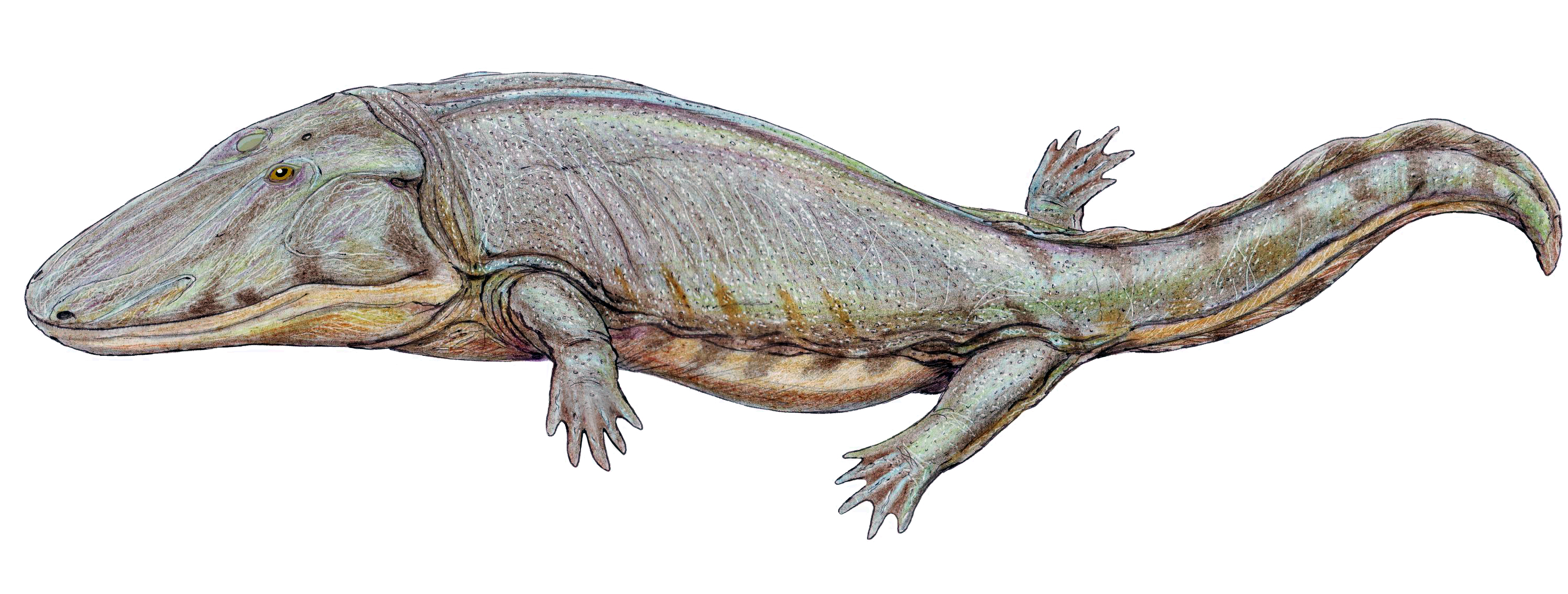
Paracyclotosaurus davidi - giant temnospondyl from Late Triassic of Australia. Image Creator: Dmitry Bogdanov
Paracyclotosaurus davidii was named after Sir Edgeworth David, the man who arranged for the British Museum (Natural History) to acquire the specimen.
Word Of The Week: Winter
noun; the coldest season of the year, in the northern hemisphere from December to February and in the southern hemisphere from June to August.
adjective; (of fruit) ripening late in the year.
verb; (especially of a bird) spend the winter in a particular place - "birds wintering in the Channel Islands"
From; winter, coldest season of the year, between autumn and spring; the name comes from an old Germanic word that means “time of water” and refers to the rain and snow of winter in middle and high latitudes according to some sources. Others state the English word winter comes from the Proto-Germanic noun *wintru-, whose origin is unclear. Several proposals exist, a commonly mentioned one connecting it to the Proto-Indo-European root *wed- 'water' or a nasal infix variant *wend-
Compare; As an adjective in Old English. The Anglo-Saxons counted years in "winters," as in Old English ænetre "one-year-old;" and wintercearig, which might mean either "winter-sad" or "sad with years." Old Norse Vetrardag, first day of winter, was the Saturday that fell between Oct. 10 and 16. winter (v.) and gheim- Proto-Indo-European root meaning "winter." It forms all or part of: chimera; chiono-; hiemal; hibernacle; hibernal; hibernate; hibernation; Himalaya.
It is the hypothetical source of/evidence for its existence is provided by: Sanskrit heman "in winter;" Hittite gimmant-, Armenian jmern, Greek kheima, Latin hiems, Old Church Slavonic zima, Lithuanian žiema "winter;" Greek khion "snow."
Ash Barty's Mindset Coach Ben Crowe On Redefining Success = Learning To Love Yourself:
This giant kangaroo once roamed New Guinea – descended from an Australian ancestor that migrated millions of years ago
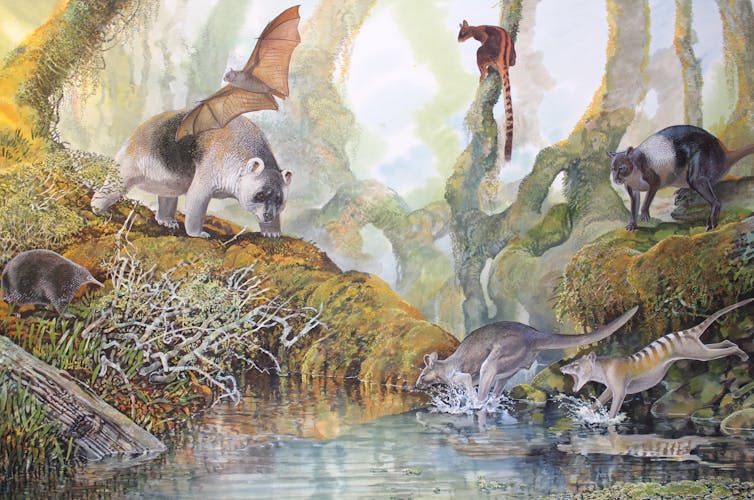
Long ago, almost up until the end of the last ice age, a peculiar giant kangaroo roamed the mountainous rainforests of New Guinea.
Now, research to be published on Thursday by myself and colleagues suggests this kangaroo was not closely related to modern Australian kangaroos. Rather, it represents a previously unknown type of primitive kangaroo unique to New Guinea.
The Age Of Megafauna
Australia used to be home to all manner of giant animals called megafauna, until most of them went extinct about 40,000 years ago. These megafauna lived alongside animals we now consider characteristic of the Australian bush – kangaroos, koalas, crocodiles and the like – but many were larger species of these.
There were giant wombats called Phascolonus, 2.5-metre-tall short-faced kangaroos, and the 3-tonne Diprotodon optatum (the largest marsupial ever). In fact, some Australian megafaunal species, such as the red kangaroo, emu and cassowary, survive through to the modern day.
The fossil megafauna of New Guinea are considerably less well-studied than those of Australia. But despite being shrouded in mystery, New Guinea’s fossil record has given us hints of fascinating and unusual animals whose evolutionary stories are entwined with Australia’s.
Palaeontologists have done sporadic expeditions and fossil digs in New Guinea, including digs by American and Australian researchers in the 1960s, ’70s and ’80s.
It was during an archaeological excavation in the early 1970s, led by Mary-Jane Mountain, that two jaws of an extinct giant kangaroo were unearthed. A young researcher (now professor) named Tim Flannery called the species Protemnodon nombe.
The fossils Flannery described are about 20,000–50,000 years old. They come from the Nombe Rockshelter, an archaeological and palaeontological site in the mountains of central Papua New Guinea. This site also delivered fossils of another kangaroo and giant four-legged marsupials called diprotodontids.
An Unexpected Discovery
Flinders University Professor Gavin Prideaux and I recently re-examined the fossils of Protemnodon nombe and found something unexpected. This strange kangaroo was not a species of the genus Protemnodon, which used to live all over Australia, from the Kimberley to Tasmania. It was something a lot more primitive and unknown.
In particular, its unusual molars with curved enamel crests set it apart from all other known kangaroos. We moved the species into a brand new genus unique to New Guinea and (very creatively) renamed it Nombe nombe.
Our findings show Nombe may have evolved from an ancient form of kangaroo that migrated into New Guinea from Australia in the late Miocene epoch, some 5–8 million years ago.
In those days, the islands of New Guinea and Australia were connected by a land bridge due to lower sea levels – whereas today they’re separated by the Torres Strait.
This “bridge” allowed early Australian mammals, including megafauna, to migrate to New Guinea’s rainforests. When the Torres Strait flooded again, these animal populations became disconnected from their Australian relatives and evolved separately to suit their tropical and mountainous New Guinean home.
We now consider Nombe to be the descendant of one of these ancient lineages of kangaroos. The squat, muscular animal lived in a diverse mountainous rainforest with thick undergrowth and a closed canopy. It evolved to eat tough leaves from trees and shrubs, which gave it a thick jawbone and strong chewing muscles.
The species is currently only known from two fossil lower jaws. And much more remains to be discovered. Did Nombe hop like modern kangaroos? Why did it go extinct?
As is typical of palaeontology, one discovery inspires an entire host of new questions.
Strange But Familiar Animals
Little of the endemic animal life of New Guinea is known outside of the island, even though it is very strange and very interesting. Very few Australians have much of an idea of what’s there, just over the strait.
When I went to the Papua New Guinea Museum in Port Moresby early in my PhD, I was thrilled by the animals I encountered. There are several living species of large, long-nosed, worm-eating echidna – one of which weighs up to 15 kilograms.
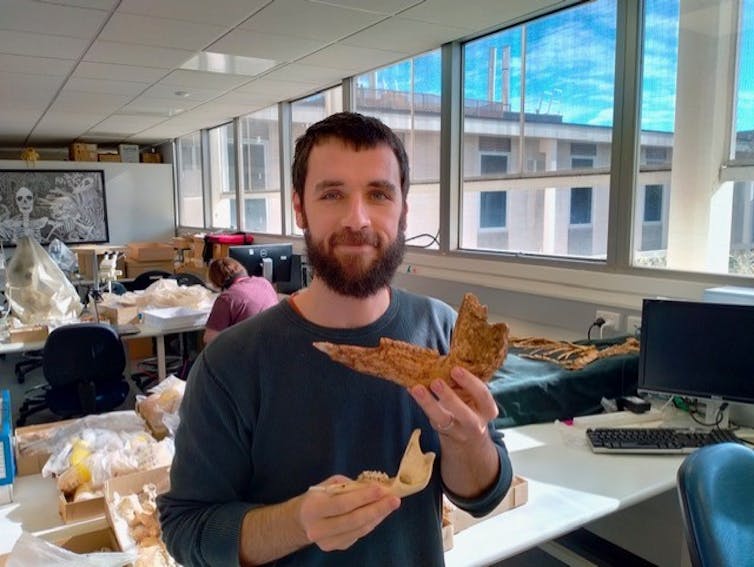
There are also dwarf cassowaries and many different wallaby, tree kangaroo and possum species that don’t exist in Australia – plus many more in the fossil record.
We tend to think of these animals as being uniquely Australian, but they have other intriguing forms in New Guinea.
As an Australian biologist, it’s both odd and exhilarating to see these “Aussie” animals that have expanded into new and weird forms in another landscape.
Excitingly for me and my colleagues, Nombe nombe may breathe some new life into palaeontology in New Guinea. We’re part of a small group of researchers that was recently awarded a grant to undertake three digs at two different sites in eastern and central Papua New Guinea over the next three years.
Working with the curators of the Papua New Guinea Museum and other biologists, we hope to inspire young local biology students to study palaeontology and discover new fossil species. If we’re lucky, there may even be a complete skeleton of Nombe nombe waiting for us.![]()
Isaac Alan Robert Kerr, PhD Candidate for Palaeontology, Flinders University
This article is republished from The Conversation under a Creative Commons license. Read the original article.
Meet 5 remarkably old animals, from a Greenland shark to a featherless, seafaring cockatoo
Benjamin Mayne, CSIROSome animals can live to a startlingly old age, from the famous 392-year-old “Greenland shark” to a 190-year-old tortoise in the Seychelles. Two science studies published last week brings us closer to understanding why some animal species can live for so long – far longer than humans.
The first, published in Science, debunked a few theories on why amphibians and reptiles (such as tortoises) live long lives. It found most reptiles and amphibians have highly variable rates of ageing and that, perhaps counter-intuitively, being coldblooded is not indicative of a long lifespan.
The only exception is turtles, which may fit the hypothesis of having a “protective phenotype”, where physical or chemical traits such as shells or venom enable a species to live longer.
The second study, which I was involved in, discovered the age of the world’s oldest aquarium fish: Granddad the lungfish.
Granddad was sent from Australia to Chicago in 1933 and lived in an aquarium until 2017. Our study measured changes in Granddad’s DNA to calculate his age at death. He was 109 years old.
Finding out how long an animal lives for isn’t easy, especially if they can outlive humans. It is well established that ageing is under genetic control, as the DNA sequence of certain genes can predict potential lifespan.
However, environmental pressures – such as getting eaten by a predator or succumbing to disease – can cut life off short, and may explain age differences between closely related species, such as between reptiles in the first study.
Here, I introduce you to five remarkably old animals and the fascinating lives they’ve led.
Granddad The Lungfish
Age: 109 years
Species: Australian lungfish (Neoceratodus forsteri)
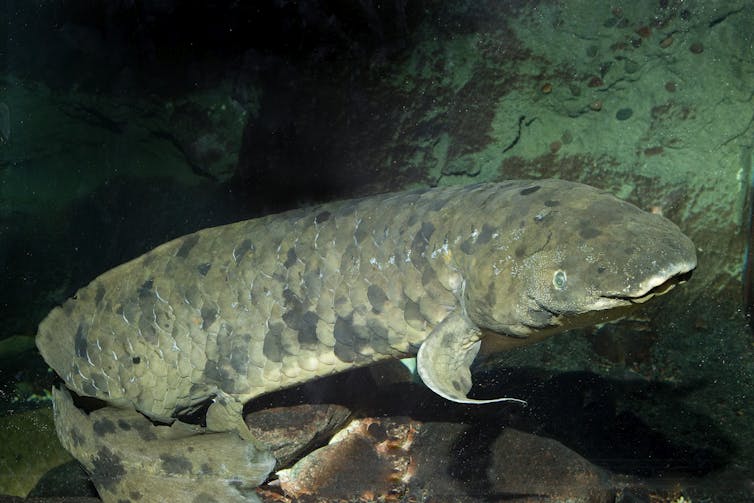
The world’s oldest lived aquarium fish is Granddad, the Australian lungfish. In our recent study, we used a DNA-based method to determine that Granddad was 109 years old when he died.
He lived a remarkable life. In 1933, Granddad made the 20-day voyage from Australia to the Chicago World’s Fair in the United States, where more than 100 million people visited him in the John G. Shedd Aquarium.
As its name suggests, Australian lungfish have the unique ability to breathe air from a single lung during dry spells, when streams become stagnant or water quality becomes poor.
The species, now endangered, has a deeply ancient lineage. Indeed, the Australian Lungfish is the closest living relative to all land-based “tetrapods” – four-limbed animals including frogs, humans, and even dinosaurs.
To find out Granddad’s age, we used a test that looks at “epigenetic” changes in the DNA, which occur from environmental changes and accumulate over a lifetime.
In fact, our study also identified the sub-population in Queensland Granddad came from. We learned Granddad originally came from the Burnett River, one of three rivers in Queensland home to Australian lungfish.
Cocky Bennett The Cockatoo
Age: 119 years
Species: sulphur-crested cockatoo (Cacatua galerita)
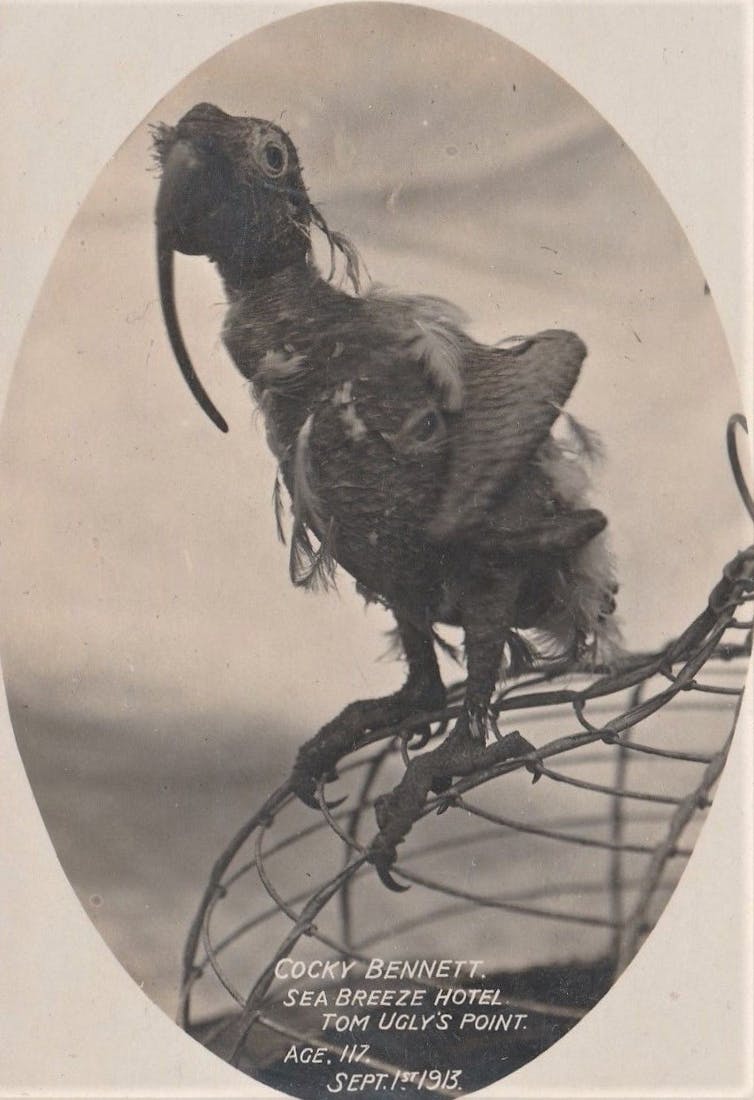
Another long-lived Australian animal was a sulphur-crested cockatoo named Cocky Bennett, who lived to 119.
Cocky lived at the Sea Breeze Hotel in Blakehurst, New South Wales, and even had a tribute written in the newspaper in 1916 when he died.
According to the tribute, Cocky would often say “one at time gentlemen, please” when other birds harassed him, and “one feather more and I’ll fly”. But due to a disease, Cocky was almost featherless for the last two decades of his exceptionally long life, and had a long, curved and twisted beak.
Prior to ruling the Sea Breeze Hotel, Cocky Bennett is thought to have accompanied a ship captain on his seafaring journeys for 78 years, and reportedly circled the globe seven times.
The Animal Ageing and Longevity Database report a much shorter lifespan for sulphur-crested cockatoos in the wild at 57 years. But in captivity, they can live as long as humans.
This is where researchers need to be careful, as lifespans are often longer for animals in captivity than would naturally occur in the wild.
Jonathan The Tortoise
Age: 190 years
Species: Seychelles giant tortoise (Aldabrachelys gigantea hololissa)
Jonathan the Seychelles giant tortoise, at 190, currently holds the record for the oldest living land animal.
It’s estimated he hatched in 1832 in the Seychelles Islands. When he was around 50 years old, Jonathan was transported to St Helena, a remote island in the South Atlantic Ocean, and gifted to the St Helena governor. Jonathan has not only outlived the governor, but has seen 31 different governors hold office.

As the new study on reptiles and amphibians hypothesised, tortoises may be long-lived due to their extra protection from their shells. A lack of predators may also play an important role. For example, Galapagos giant tortoises can live to over 100 and are free from any natural predators.
The Greenland Shark
Age: 392 years
Species: Greenland shark (Somniosus microcephalus)
The species, the Greenland shark, is thought to be the longest-lived animal with a backbone. We know only little about Greenland sharks. But a 2016 study used radiocarbon dating and found one to be 392 years old.
The authors also estimated that Greenland sharks don’t reach sexual maturity until 156 years old.
Living deep in the cold waters of the Arctic and North Atlantic oceans, these iconic sharks are also one of the slowest growing, at a rate of around 1 centimetre per year. Yet, these ocean giants can reach over 5 metres in length.
We know only little about Greenland sharks, including how long they can live for. It’s thought freezing polar waters may play a role in their longevity as it may slow down their metabolism.
Ming The Clam
Age: 507 years
Species: ocean quahog (Arctica islandica)

The ocean quahog is the world’s longest-lived species, with many reaching over 400 years. As a clam (or marine bivalve mollusk), it’s the only invertebrate on our list. Just like the Greenland shark, this species also lives in the cold waters of the North Atlantic Ocean.
One ocean quahog called “Ming” lived for 507 years. He was named after the Chinese dynasty in power when he was born in 1499, and was discovered off the coast of Iceland. His age was confirmed by counting growth bands on its shell, in the same way you’d count the rings of a tree.
Little is known to why ocean quahogs live for so long but, similar to the Greenland shark, it’s thought the colder waters may have a role in its long lifespan. ![]()
Benjamin Mayne, Molecular biologist and bioinformatician, CSIRO
This article is republished from The Conversation under a Creative Commons license. Read the original article.
The literary life of Frank Moorhouse, a giant of Australian letters

Frank Moorhouse, who died in Sydney on Sunday, made a significant and multi-faceted contribution to Australia’s literary life.
He was born in 1938 in Nowra, which he described as “a small Australian country town (two weekly newspapers but no public library)”. At the age of 17, he became a cadet journalist at the Sydney Morning Herald. His career as a fiction writer began – as do those of many writers today – by publishing short stories in literary journals: Southerly, Overland and Westerly.
In the 1970s, Moorhouse became known as one of Australia’s foremost experimentalists in fiction, working with discontinuous and fragmented narratives in his short-story collections Futility and Other Animals (1966), The Americans, Baby (1972), and The Electrical Experience (1974).
This was the period that saw Moorhouse join a flourishing community of writers living and working Sydney’s Balmain, including David Williamson, Murray Bail, Peter Carey, Vicki Viidikas, Bob Adamson, and others. Moorhouse claimed that Salman Rushdie was also temporarily part of the gang.
In 1972, with Carmel Kelly and Michael Wilding, Moorhouse co-founded the magazine Tabloid Story, “as a traveling exhibit for the short story”. Its mission was resist established modes of fictional realism, especially those that predominated in Australia.
This resistance included a willingness to write about sex. The Brisbane Vice Squad received complaints about one of the stories Moorhouse published in the first issue of the magazine and subsequently seized all copies from the University of Queensland campus.

Throughout his career Moorhouse wrote explicitly and shamelessly about sex, especially in relation to fluid gender and sexual identities. He described himself as bisexual. He is one of the most high-profile queer Australian writers of his generation, unusual in that he has long written publicly about his sexuality.
Sexuality was one lens for Moorhouse’s longstanding and shifting relationship with Henry Lawson, and The Drover’s Wife in particular. The explicitly satirical take of his 1980 story was eventually replaced by the appreciative and autobiographical approach of The Drover’s Wife: A Celebration of a Great Australian Love Affair (2017). In this late work, Moorhouse speculates about Lawson’s sexuality as a prompt to think back on his own sexual history.
Although he steadfastly espoused the pleasures of the good life, Moorhouse worked to advance the interests of Australian writers. He held positions as union organiser for the Workers Education Association and the Australian Journalists Association. He was president of the Australian Society of Authors from 1981 to 1983.
Moorhouse was also actively involved in campaigns to protect the conditions under which authors worked in Australia. He was the plaintiff in a high-profile court case protecting authors’ copyright (University of NSW v Moorhouse, 1975). He spoke out about the parlous state of financial support for the literary arts in Australia, campaigned against censorship, and published a book-length account of ASIO’s surveillance of Australian citizens.

Moorhouse’s most significant achievement is the “Edith” triology: Grand Days (1993), Dark Palace (2000) and Cold Light (2011). These three novels are the most sustained and successful fictional engagement with the world of politics and international relations in Australian literary history.
“Politics is narrative, a fiction,” Moorhouse wrote in in 1981. The Edith novels dramatise the affective life of politics in heartbreaking detail. Edith Campbell Berry is a wonderfully engaging and flawed protagonist: a young Australian woman who sets her sights on the League of Nations and whose development as a person becomes inextricably bound up with the fortunes of that institution.
The novels trace Edith’s investment in the successes and failures of international cooperation – and her relationship with the gender-fluid diplomat Ambrose Westwood – in a way that enables the reader to understand something of how personal life and political commitment can be intertwined.
The career of Frank Moorhouse was marked by earnestness and experimentation, political commitment and irreverence. His old-school cosmopolitanism saw Grand Days controversially ruled ineligible for the Miles Franklin Award in 1994, on the grounds that it did not meet the criterion that it represented “Australian life”. Its sequel, Dark Palace, went on to win the award in 2000.
Moorhouse produced a huge body of work: autobiographical and journalistic pieces, short stories, collections, nonfiction books and novels. He was made a member of the Order of Australia in 1985 for his services to literature.
In an essay published in Meanjin in 2017, Moorhouse wondered
how a young man from an Australian country town could identify and aspire to belong to a way of life called “literary”?
Moorhouse set the example himself. Over the course of his long career, he changed the nature of Australian writing, worked to improve conditions for authors, and delighted his many readers: a life called “literary” indeed.![]()
Julieanne Lamond, Senior Lecturer in English, Australian National University
This article is republished from The Conversation under a Creative Commons license. Read the original article.
Facial recognition is on the rise – but the law is lagging a long way behind

Private companies and public authorities are quietly using facial recognition systems around Australia.
Despite the growing use of this controversial technology, there is little in the way of specific regulations and guidelines to govern its use.
Spying On Shoppers
We were reminded of this fact recently when consumer advocates at CHOICE revealed that major retailers in Australia are using the technology to identify people claimed to be thieves and troublemakers.
There is no dispute about the goal of reducing harm and theft. But there is also little transparency about how this technology is being used.
CHOICE found that most people have no idea their faces are being scanned and matched to stored images in a database. Nor do they know how these databases are created, how accurate they are, and how secure the data they collect is.
As CHOICE discovered, the notification to customers is inadequate. It comes in the form of small, hard-to-notice signs in some cases. In others, the use of the technology is announced in online notices rarely read by customers.
The companies clearly don’t want to draw attention to their use of the technology or to account for how it is being deployed.
Police Are Eager
Something similar is happening with the use of the technology by Australian police. Police in New South Wales, for example, have embarked on a “low-volume” trial of a nationwide face-recognition database. This trial took place despite the fact that the enabling legislation for the national database has not yet been passed.
In South Australia, controversy over Adelaide’s plans to upgrade its CCTV system with face-recognition capability led the city council to vote not to purchase the necessary software. The council has also asked South Australia Police not to use face-recognition technology until legislation is in place to govern its use.
However, SA Police have indicated an interest in using the technology.
In a public statement, the police described the technology as a potentially useful tool for criminal investigations. The statement also noted:
There is no legislative restriction on the use of facial recognition technology in South Australia for investigations.
A Controversial Tool
Adelaide City Council’s call for regulation is a necessary response to the expanding use of automated facial recognition.
This is a powerful technology that promises to fundamentally change our experience of privacy and anonymity. There is already a large gap between the amount of personal information collected about us every day and our own knowledge of how this information is being used, and facial recognition will only make the gap bigger.
Recent events suggest a reluctance on the part of retail outlets and public authorities alike to publicise their use of the technology.
Although it is seen as a potentially useful tool, it can be a controversial one. A world in which remote cameras can identify and track people as they move through public space seems alarmingly Orwellian.
The technology has also been criticised for being invasive and, in some cases, biased and inaccurate. In the US, for example, people have already been wrongly arrested based on matches made by face-recognition systems.
Public Pushback
There has also been widespread public opposition to the use of the technology in some cities and states in the US, which have gone so far as to impose bans on its use.
Surveys show the Australian public have concerns about the invasiveness of the technology, but that there is also support for its potential use to increase public safety and security.
Facial-recognition technology isn’t going away. It’s likely to become less expensive and more accurate and powerful in the near future. Instead of implementing it piecemeal, under the radar, we need to directly confront both the potential harms and benefits of the technology, and to provide clear rules for its use.
What Would Regulations Look Like?
Last year, then human rights commissioner Ed Santow called for a partial ban on the use of facial-recognition technology. He is now developing model legislation for how it might be regulated in Australia.
Any regulation of the technology will need to consider both the potential benefits of its use and the risks to privacy rights and civic life.
It will also need to consider enforceable standards for its proper use. These could include the right to correct inaccurate information, the need to provide human confirmation for automated forms of identification, and the setting of minimum standards of accuracy.
They could also entail improving public consultation and consent around the use of the technology, and a requirement for the performance of systems to be accountable to an independent authority and to those researching the technology.
As the reach of facial recognition expands, we need more public and parliamentary debate to develop appropriate regulations for governing its use.
If you’re in Adelaide, there will be a public forum on regulating facial recognition technology at the Town Hall tonight (Monday, June 27). Ed Santow and his colleague Lauren Perry will present their model legislation, and they will be joined in discussion by South Australian parliamentarian Tammy Franks and Law Society of South Australia president Justin Stewart-Rattray.![]()
Mark Andrejevic, Professor, School of Media, Film, and Journalism, Monash University, Monash University and Gavin JD Smith, Associate Professor in Sociology, Australian National University
This article is republished from The Conversation under a Creative Commons license. Read the original article.
How Japanese avant-garde ceramicists have tested the limits of clay

Review: Pure Form, Art Gallery of South Australia.
Japanese art post the second world war is infinitely fascinating. At a time when the country was under Allied occupation and Japan had paid a high price for the war in the Pacific to end, its artists were revelling in new found freedom.
Some of the most interesting work of this era was from avant-garde ceramicists. Their revolution in clay led to them abandoning the Mingei tradition of Japanese folk craft which included making functional vessels such as tea bowls.
In its place, they redefined themselves as artists, placed a premium on individual expression and, as modernists with a Japanese inflection, began producing abstract sculptural ceramics.
Three generations of artists now work in this style, and their stunning work stretching from the late 1940s to 2021 is the subject of the Art Gallery of South Australia’s exhibition Pure Form. The title underscores the shift in ceramics from function to form.
A Delicate And Refined Aesthetic
In a time of often unnamed craftsmen producing humble ceramic objects for everyday use integral to the Mingei tradition, five Kyoto-based ceramicists were abreast of international trends in avant-garde modernism. They formed a group called Sōdeisha, meaning “crawling through the mud association” in 1948.
There was initially a gradual shift to pure form, as seen in Yamada Hikaru’s Glazed jar with sgraffito (scratched decoration) (1951-52). Its shape still alludes to a functional vessel while its sgraffito linework – a decorative technique of incising into pale slip to reveal the clay beneath – is steeped in Korean ceramics.

Other works in the exhibition reference surrealism, such as Square vase on pedestal foot (1950-60) by Sōdeisha member Suzuki Osamu. There are vases devoid of openings, elongated forms negating function, or, as with second-generation Sōdeisha artist Hayashi Hideyuki’s Walk (c. 1980), a minimal geometric form referencing the human body.
A delicate and refined aesthetic underpins the work on show, such as that of Matsutani Fumio, a third-generation artist whose ceramics balance innovation with tradition, as in his Yellow (Ou) (2021). This is a flamboyant extension of the architecture of the tea bowl, replete with beautiful line work.

In terms of drama, Moriyama Kanjiro’s metallic glazed Kai (Turn) (2020) takes the honours for simulating movement. Its tower-like form is constructed from individual pieces assembled and fired to make a stunning swirling sculpture.

Women’s Ceramic Art And The Broader Diaspora
One of the many strengths of this exhibition is its focus on women of the calibre of Tsuboi Asuka, who was instrumental in establishing the Women’s Association of Ceramic Art in Kyoto in 1957.
Women’s rights came to the fore during the occupation, along with suffrage, and women ceramicists gained visibility.
Tsuboi’s three panel work Untitled (c. 2005) delicately inserts Japanese textile patterns in clay, each panel taking on the movement of cloth swaying in the wind.
Another is Tanaka Yu, whose clever wrapped bundles in clay imitate reality. Her Yellow sculpture in the shape of a furoshiki (c. 2108), looking like a beautifully wrapped object complete with a knotted tie, is informed by the ancient Japanese art of cloth wrapping.

Japanese-trained ceramic sculptors now form a diaspora working outside Japan – one is US-based Kaneko Jun in Nebraska, whose large hand-built forms such as Untitled triangle (dango) (2004), employ abstract design features.
Uranishi Kenji is another emigre, based in Brisbane since 2004. His white glazed objects portray the wondrous world of coral in the Great Barrier Reef.
Balancing Tradition And The New
The porcelain sculpture on show is superb. Matsuda Yuriko’s erotically charged foot, In her shoes (c. 2007), with its tightly curled back toes suggesting sexual pleasure, is a stunning piece.

Her subject is frequently the female body. Here, the decorative surface evokes the patterning of Meiji ceramics while its subject matter sits squarely in the Japanese tradition of shunga, or erotic imagery. Refreshingly, it comes from the perspective of a woman.
Yet another porcelain piece, Struggling forms (c. 2005) by Nakashima Harumi, looks almost octopus-like, but has only two feet. Its twists echo that of a Möbius strip, it looks disarmingly like an impossible form, but achieves perfect balance. The blue colour of the dot patterning harks back to the Japanese tradition of sometsuke which is underglaze painting in cobalt blue on porcelain or stoneware.
In contrast to referencing tradition, Mishima Kimiyo’s ceramic forms in Box Batter -17 (2017) shows bottles in newspaper wrappings in a roughly opened box, very much of their time. Her interest is the imbalance between the human footprint and nature, seen in the detritus of modern life, newspapers, packaging and soft drink bottles littering the environment.

The Limits Of Clay
This is a must-see exhibition.
Its 100 plus artworks by 65 ceramicists drawn from public and private collections in Australia and Japan, and spanning modern and contemporary work, are dazzling in innovation, skill and aesthetic.
The sculptural leap to pure form in porcelain in Fukami Sueharu’s To the sky (c. 2013), simulates flight itself and leaves viewers elevated by the experience.

While in the exhibition space, I could hear some, including senior artists, puzzling as to how several of the ceramic objects were actually produced. These ceramicists have indeed tested the limits of clay.
Pure Form is at the Art Gallery of South Australia until November 6.![]()
Catherine Speck, Emerita Professor, Art History and Curatorship, University of Adelaide
This article is republished from The Conversation under a Creative Commons license. Read the original article.
Australia is one of few countries that doesn’t pay session musicians ongoing royalties. Our music industry suffers as a result

Most of the music we listen to is made by session musicians. These guns for hire are experts in their field, much sought after and often bring a unique sound – that extra thing that helps to make the recording what it is.
Whether we’re at home or in our cars, at the gym, the shops, a cafe or a pub, recorded performances form the soundtrack to our lives. This soundtrack includes music made by hired freelance instrumentalists and singers whose contributions are vital to the appeal and quality of those recordings.
While we get to enjoy the end product seemingly free of charge, all music that is broadcast or communicated to a listener is licensed by the owner of that recording and a fee is paid for that licence. Collection agencies such as PPCA collect these licences and disperse royalties to the rights holders of the registered recordings.
Does Australia Value Musicians?
Historically, Australian session musicians have had no economic claim to their recorded performances beyond a basic session fee – an unregulated fee that in real terms, has been going backwards for decades.
While many other countries support the rights of performers to ongoing royalties, Australia is one of a handful of developed economies that does not. This has denied our musicians access to important income streams at home and abroad, placed a limit on our trade with other countries and positioned us as an outlier.
We are seen as a country that does not value musicians the way they are valued elsewhere in the world, a perception that needs to change if we want to provide some incentive for the next generation to keep making music.
So, how did it get to this?
In 1996 the World Intellectual Property Organisation (WIPO) drafted the WIPO Performances and Phonograms Treaty, which granted performers economic rights for their recorded performances and “equitable remuneration” when these performances were monetised.
Since then, free trade agreements, such as the one between Australia and the United States in 2004, have required that parties sign up to the treaty, which our government did in 2007. Unfortunately, then Foreign Affairs Minister Alexander Downer deliberately excluded Article 15.1 from the agreement, leaving Australian musicians without the same rights as those enjoyed by musicians in other parts of the world.

For example, in the UK, US, most of Europe, as well as Mexico, Brazil, Canada and Japan, performers are assigned a percentage of the licence revenue.
According to Peter Thoms, board member of the UK collection agency PPL,
[…] in the UK, PPL royalties are split 50/50 with the labels and performers. A featured artist, who will be contracted to the label, gets a bigger performer share but session players also share in this revenue. Players who have been active on many recordings receive significant amounts annually. This helps make session playing as a vocation more viable and is a fair recognition of their contribution.
However, when the same recordings are then broadcast in Australia, these musicians are not entitled to any performance royalties. This has led to countries like the UK reciprocating our approach and no longer paying session musicians or artists on Australian recordings when they are broadcast in the UK.
The Australian Musician Brain Drain
The extra twist is that Australian artists with international appeal are now frequently recording outside Australia to enable them to qualify for European royalties, which are paid on a qualifying territory basis.
As Australia is no longer a qualifying territory there is motivation for Australian artists to record in the UK and elsewhere to ensure they can claim equitable remuneration in the big overseas markets.
The WIPO Treaty aimed to “provide adequate solutions to the questions raised by economic, social, cultural and technological developments”, all of which have evolved enormously since 1996. If Australia is to keep up with these changes, it must stop lagging behind and adopt Article 15.1.
This has the potential to increase productivity in the recording economy, including revenue derived from export, and expand a sector that is currently heavily reliant on live music. Increasing passive income streams would also help to grow and sustain the careers of young musicians and support performers through future crises.
What Can We Do To Fix This Problem?
The current free trade agreement between Australia and the UK provides us with a political opening for this conversation. The agreement calls for a discussion about measures to ensure “adequate” remuneration for performers and producers of recordings. If we truly value our musicians, adequate must be equitable.
All performers, classical and contemporary, as well as record producers should be having this conversation right now, engaging with other stakeholders and raising awareness.

If the Australian government and recording industry will acknowledge the prevailing conditions for musicians globally and adopt the principle of equitable remuneration, we can begin rebuilding the structures that support payments to performers at home and overseas.
By valuing our musicians more we will add value to the sector, with better economic regulation and new systems connecting all Australian musicians to the larger markets.
So next time you hear music playing, think of the session musicians and producers whose skills helped to make that song a hit - the drummer on X, the trombone player on Y, or the vocalist on that annoying advertisement that’s been running for 20 years – and ask someone close by, why is it that Australian musicians are denied equitable remuneration that exists in so many other parts of the world?![]()
Rod Davies, Lecturer in popular music and songwriting, Monash University
This article is republished from The Conversation under a Creative Commons license. Read the original article.
Flu Vaccination Linked To 40% Reduced Risk Of Alzheimer's Disease
‘It was the beginning of feminism’: how higher education paved the way for the women of Albury-Wodonga

Regional women are too often forgotten in Australia’s political movements. The “big teal steal” focuses on the independent candidates from Melbourne and Sydney, forgetting that independent Cathy McGowan stole the seat of Indi from the Liberals a decade earlier.
This forgetfulness applies to the Australian women’s movement from the heady 1970s, with the accepted history centring the women who led the movement from the cities.
This neglect of regional women was driven home to me in a series of interviews I conducted with past students of the Albury-Wodonga Study Centre of the Riverina College of Advanced Education (now Charles Sturt University).
The women I interviewed had all been mature-age students of the Study Centre in the 1970s. For all of them, this education offered them a new life.
What stuck out to me in these interviews, was when asked what undertaking study meant to them, many responded “it was the beginning of feminism”.

Women And Education
Women had traditionally missed out on the opportunity for a higher education, held back by cost, society’s expectations on the role of women and, for regional women, distance.
Of the women I interviewed, all had missed out on the opportunity of a further education. Jan left school at 15 and travelled with her husband to Papua New Guinea for his career. Ann worked doing “whatever I could to earn enough money” to solely support her six kids.
Once mothers, further education was seen to be a waste of time and money: they had already fulfilled what feminist Anne Summers called their “‘natural’ vocation”.
Ann recalled that, when she initially enrolled at the Study Centre, she experienced a backlash from her own children who
thought I should have been putting more time into being a mother. All this study business was taking away from what I was expected to do with my life.
The Whitlam Government’s free education initiative removed the financial barrier, yet it was the women’s movement’s critique of gender roles that worked to redefine what possibilities were open to women.
Jan explained:
of course the reason I could go, perhaps this isn’t quite true, but I think it was, was because of the Whitlam free education. It was part of the women’s movement […] and so there was really no obstacle in my way.
Education And Feminism
Opened in 1972, the Study Centre was to help local professionals upskill. The courses were vocationally focused, ran in the evening and located in the centre of town.
These factors attracted large numbers of Albury-Wodonga women as it accommodated their busy roles as mothers and wives. Speaking to the local paper, centre director Geoff Fairhall attributed this influx to “bored housewife syndrome”.
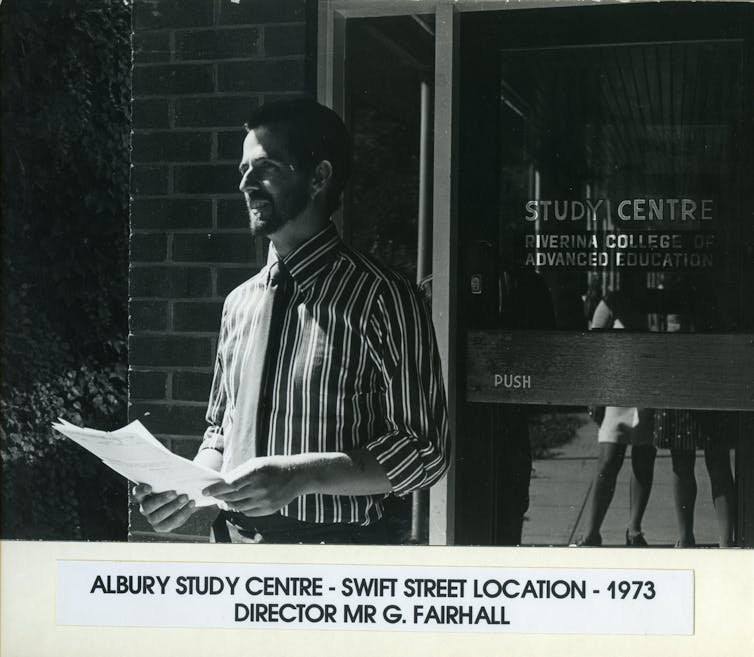
Fairhall missed the mark. The women were using the Study Centre to radically alter their lives as women, mirroring feminist principles from the period.
First, they developed a community outside of the family home, not tied to their family or marriage. This provided the space for them to engage in a form of consciousness-raising, as they applied their course material to their lives as women.
Jan recalled a psychology class where the women concluded they already knew much of the material as being “guardians of the health of the family” they had already “picked up on those things”.
Eileen simply stated her studies “helped me to look at my own life in a critical way”.
Second, this education had an impact on their lives as women as they developed an intellectual and economic independence.
Encouraged to undertake further study to stop her from “vegetating” at home, Barb opened her own book-keeping business upon graduation.
Reflecting on her study, Barb argued:
having the degree, it gave me that freedom […] I wasn’t stuck working in a full-time, low-paying job like a lot of women my age were.
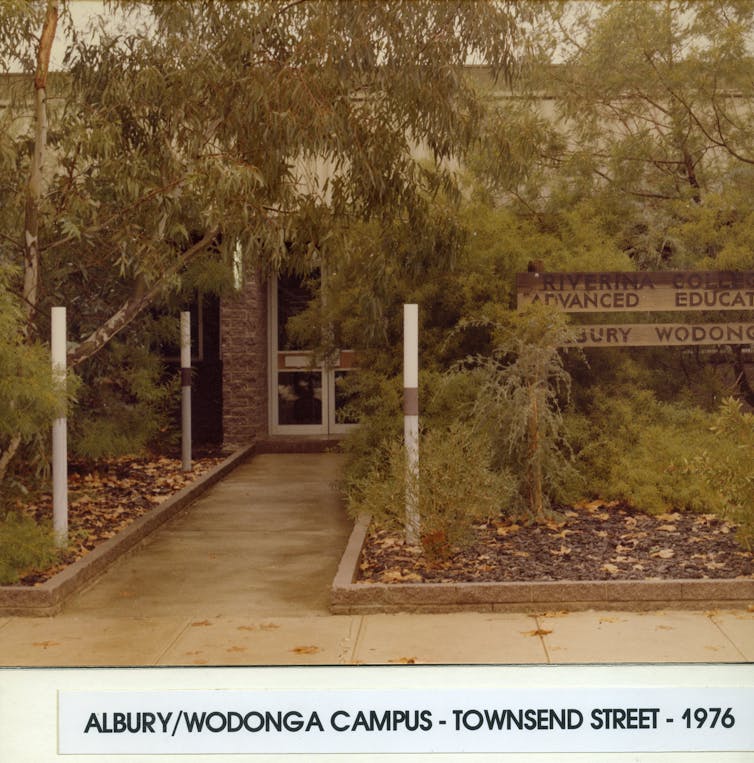
Lastly, this challenged the highly gendered public and private spaces of regional Albury-Wodonga: women developed new identities not defined by their role as mother or wife.
Summarised by Ann:
studying and graduating and moving into the workforce as a professional, is miles away from being a housewife! The degree gives the woman a chance to take part in society as a real person rather than just being a mum.
The women of the Study Centre may not have led the 1970s Women’s Liberation movement, but they lived it, and through it their lives changed dramatically. It is important this story becomes part of our national history of feminism.
As Eileen told me:
so it was […] really inspiring, all these women who had lived on the farm for 30 years, now were doing something […] It was the beginning of feminism.
Portia Dilena, History PhD Candidate, La Trobe University
This article is republished from The Conversation under a Creative Commons license. Read the original article.
Centrelink Payment Changes From 1 July 2022
- $9,500 for a single homeowner
- $14,000 for a homeowning couple
- $17,500 for a single non-homeowner
- $22,000 for a non-homeowning couple.
No Time For Complacency In Battle With COVID-19
Mulled wine: how ‘Christmas in a cup’ went from ancient medicine to an Aussie winter warmer

When the temperature drops in the southern hemisphere, you might like to stave off the chill with a big steaming pot of mulled wine, and fill your home with the comforting aroma of red wine, citrus and spice.
The mention of mulled wine conjures images of winter-wonderland white-Christmas scenes – no matter where in the world you live.
Although mulled wine is a staple of contemporary Christmas celebrations throughout Europe, and the customs and recipes may differ somewhat, the celebratory nature of the warm, spiced (usually) red wine is common to all – as are the ingredients sugar, cinnamon and cloves.
Its long history incorporates both pagan and Christian lore, traverses old and new worlds and established it as a favourite Christmastime beverage, travellers’ tipple of choice and a tonic of sorts in times of convalescence.
Ancient Pagan Paradox
Whether for festivity or fortification, mulled wine has been around for at least 2,000 years.
The ancient Greek version of mulled wine, Ypocras or Hippocras, takes its name from Hippocrates, the Greek physician regarded as the father of medicine. (It is also the name of the apothecary’s bag or sieve used to strain this wine.)

Wine played an important role in medicine in Greek antiquity. In the only ancient cookery book surviving to our times, De re coquinaria, we see a few versions of spice wine (conditum paradoxum) and wine with honey and pepper.
The latter, known as conditum melizomum viatorum was recommended for travellers: the honey and spices acted as a preservative, allowing the alcohol to accompany travellers on long journeys.
Conditum paradoxium became a prominent feature of the Saturnalia Festival in ancient Rome: the winter solstice celebration of the passing of the shortest day of the year and the rebirth of the Sun.

By the time of the late-Roman Republic, Saturnalia had grown from a one-day celebration to a week-long festival held each year from December 17 to 23. Consuming the warming wine as part of the celebrations was thought to help ward off winter illness and so became firmly associated with the December celebrations.
Towards the end of the 4th century, this pagan solstice celebration became interwoven with Christianity and the celebration of Christmas Day. By the middle ages, mulled wine had become entrenched as part of the festivities throughout Europe.
Mulling Over The Recipe
According to several medieval cookbooks the most common of the sweet, spiced wines in the late middle-ages were still referred to as hippocras, with the term “mulled wine” coming later.
Just as they do today, ingredients varied depending on the region, but key components were hot red wine blended with sugar and ground spices – usually ginger, cinnamon and pepper and sometimes nutmeg and cloves.

Throughout Europe, mulled wine is synonymous with postcard scenes of snow-capped Alps, après-ski shenanigans, the aroma of roasting chestnuts and Christmas markets.
In Sweden, glogg comes sprinkled with almonds and plump raisins, which have soaked up the wine and taken on the flavour of the spices. It is often served with distinctive raisin-studded saffron buns called Lussekatter.
Bischopswijn (Bishop’s Wine) is the Dutch name, in honour of Saint Nicholas, the bishop celebrated during the Feast of Sinterklaas in early December in the Netherlands.

Italians call it vin hrüle (French for “burnt wine”). In Poland it’s called grzane wino and in Germany it is gluhwein, which both directly translate to mulled wine.
So beloved is gluhwein in Germany, that when popular Christmas markets were cancelled in December 2020 due to COVID restrictions, pop-up gluhwein stalls began appearing in parks and street corners in German cities despite the rules.
It sparked a plea in parliament from then German Chancellor Angela Merkel for citizens to forgo their usual Christmastime tipple to help avoid increased numbers of deaths.
Exorcising The Winter Chill
In France it’s called vin chaud (“hot wine”) and more likely than not to contain star anise. The larger-than-life French writer Colette described vin chaud as “the great exorcist of winter crepuscules [twilight] that fall as early as three o’clock” in an advertisement she wrote for a French wine merchant in the early 20th century.
Rather than a Christmastime tipple, in the first 100 years of Australian settlement, mulled wine was more likely to be administered during times of illness or convalescence rather than times of celebration.

In the 19th and 20th centuries Australian domestic cookbooks commonly included recipes for sick or convalescing patients. Advice about food preparation for “invalids”, “convalescents” or “the sickroom” would commonly take up an entire section of cookbooks. Many of these included recipes for mulled wine.
With nobody under any illusions nowadays that mixing up a large amount of sugar in a hefty pot of red wine is good for anyone’s health, we find other similarly absurd excuses to partake. Christmas in July, anyone?![]()
Morag Kobez, Associate lecturer, Queensland University of Technology
This article is republished from The Conversation under a Creative Commons license. Read the original article.
The iPhone turns 15: a look at the past (and future) of one of the 21st century’s most influential devices

It is 15 years since Apple released what’s arguably its flagship device: the iPhone. A decade and a half later, there are few products that have managed to reach a similar level of brand recognition.
Announced to an eager audience in 2007, the iPhone has revolutionised how we communicate and even how we live day to day.
The Large-Screen Revolution
The iPhone was released in the United States in June 2007, and in a further six countries in November.
From the launch of Mac computers in the 1970s to the iPod in 2001, Apple already knew how to engage with its audience – and how to encourage extraordinary levels of hype when launching a product.
Early reviews for the iPhone were almost universally glowing, applauding Apple’s attention to detail and style. The only problem flagged was network connectivity – and this was an issue with slow speeds on phone carrier networks, rather than the device itself.
Consumers’ appreciation of the iPhone’s style was no surprise. It was indicative of an emerging trend towards smartphones with large-format screens (but which still reflected the form of a phone). The Nokia N95 was another such example that hit the market the same year.

The original iPhone offered wifi, supported 2G EDGE connectivity and had internet download speeds below 500Kbps (compared to multi Mbps speeds today).
It was also limited to 4GB or 8GB models. This might sound pitiful compared to the 1TB options available today, but it’s enough to hold hundreds of songs or videos and was revolutionary at the time.
The Apple Assembly Line
The iPhone 3G was rolled out across the globe in July 2008, with significantly improved data speeds and the addition of the Appple App Store. Even though it offered a mere 500 apps at launch, the app store marked a significant improvement in phone functionality.
And just as users started getting used to 3G, it was superseded by the 3GS about a year later.
This cycle of regularly pushing out new products was critical to Apple’s success. By releasing regular updates (either through whole product iterations, or more minor functionality improvements) Apple managed to secure an enthusiastic audience, eager for new releases each year.

Also, since older products would often be passed down within families, Apple’s product pipeline helped it establish a multi-generational user base. This pipeline continues to operate today.
New Approaches To Old Ways
The iPhone family has delivered size, speed and storage improvements over its 15-year history. Some of its “new” features weren’t necessarily new to the market, but Apple excelled at delivering them in highly integrated ways that “just worked” (as founder Steve Jobs would say).
In 2013, the iPhone 5S introduced touch ID, which allowed users to unlock their phones with a fingerprint. While this had first been introduced with the Fujitsu F505i back in 2003, Apple delivered a robust implementation of the feature. Of course, it wasn’t long before enterprising individuals learnt how to bypass the mechanism.
The iPhone 8, released in 2017, brought with it the face ID feature. This still had weaknesses, but was at least immune to being unlocked with a photo.
Beyond security, the iPhone series has also produced year-on-year improvements in camera technology. While the original model sported a paltry two-megapixel camera, later models featured multiple lenses, with resolution boosted to 12 megapixels – rivalling many digital cameras on the market.
Wireless charging was introduced with the iPhone 8 (although preceded by Samsung as early as 2011). And the bezel-less design of the iPhone X, released in 2017, built on features found in the Sharp Aquos S2 from the same year.
Controversy
Nonetheless, the iPhone has not been without problems. The introduction of the iPhone 7 in 2016 saw the removal of the standard 3.5mm headphone socket – and many weren’t happy.
While an adaptor was initially provided for customers to connect their regular headphones, it was only free for about two years. After that it had to be purchased. In 2016 there were indications of a spike in wireless headphone sales. Perhaps somewhat conveniently, Apple launched its AirPods (wireless Bluetooth earbuds) at the same time.
A similar change came in 2020 with the release of the iPhone 12. Arguing consumers had a multitude of spare devices – and perhaps trying to ride on the green re-use agenda – Apple removed chargers from the unboxing experience.
Users still received a charge cable, but it was a USB-C to lightning cable, whereas previous iPhone chargers would have a USB-A socket (the standard USB port).

The justification iPhone users would have a box full of old chargers overlooked the fact that none of them would be likely to support the newer and faster USB-C cable.
So you could use your old USB-A to lightning cable and charger to charge your shiny new phone, but you’d be limited to slower charging speeds.
Future
If the past 15 years are anything to go by, it’s likely the iPhone will continue with annual product releases (as we write this article many will be anticipating the iPhone 14 due later this year).
These models will probably bring improvements in speed, weight, battery life, camera resolution and storage capacity. However, it’s not likely we’ll be seeing many groundbreaking innovations in the next few years.
The latest iPhones are already highly sophisticated mini computers, which means there’s limited scope for fundamental enhancement.
Perhaps the most radical change will be the shift from Apple’s proprietary lightning connection to USB-C charging, thanks to a new European Union directive. And while a common power connector standard is widely considered a positive move, Apple wasn’t convinced:
We believe regulations that impose harmonisation of smartphone chargers would stifle innovation rather than encourage it.
As display technologies evolve, Apple may turn to the clam-shell phone design, with a fully foldable display screen.
Samsung has already brought this to the market. But Apple, in true fashion, will likely wait until the technology (particularly the glass) has evolved to deliver an experience in line with what iPhone users have come to expect.
While we can’t predict what the iPhone will look like in another 15 years (although some have tried), it’s likely the demand for Apple products will still be there, driven by Apple’s strong brand loyalty.![]()
Ismini Vasileiou, Associate Professor in Information Systems, De Montfort University and Paul Haskell-Dowland, Professor of Cyber Security Practice, Edith Cowan University
This article is republished from The Conversation under a Creative Commons license. Read the original article.
DSS Scam Alert

- contact members of the public seeking personal information, or,
- email members of the public without them having contacted DSS.
Grattan on Friday: Election delivered bonanza of crossbenchers but what impact will they make?
Michelle Grattan, University of CanberraDavid Pocock, the progressive independent who broke the Liberals’ stranglehold on one of the two ACT Senate seats, wouldn’t have expected to find himself allied with Pauline Hanson before even being sworn in.
But, as they say, politics makes strange bedfellows and the two have already discussed trying to get Anthony Albanese to compromise on his decision to slash crossbench staff numbers.
The staff cut will just be the start of Labor’s search for general savings, culminating in the October budget. Some of those will have the public much more agitated than will trimming politicians’ entitlements.
But Albanese’s action, without prior consultation, has come as a rude shock to the “teal” independents who, together with other new members, arrived at Parliament House this week for their orientation.
The teals have been feted in the media and seen by many voters as part of a new breed of politician. They probably didn’t expect such rough treatment, delivered in a letter from the new PM.
Existing crossbenchers, with years of experience of how politics works, may have been less surprised, but they were also dismayed.
In the last parliament crossbenchers had four extra staff, above those allocated to government and opposition backbenchers. With a much-expanded crossbench, Albanese has brought that back to one extra (two for those in larger electorates).
Apart from expense, he’s arguing fairness with other backbenchers. He’s also saying plans to beef up the parliamentary library will provide more resources for crossbenchers.
The crossbenchers say they don’t have the backup a major party gives its own MPs, and that the library can’t provide the sort of tailored advice a staffer does, let alone be as fast with assistance, or available around the clock.
Crossbench senators make a further case. In a chamber where the government is in a minority, their votes matter more than those of crossbenchers in the lower house, where Labor will have the numbers.
This applies particularly to someone like Pocock who, with the Greens, is expected to assure the government of its majority on various pieces of legislation. (The Greens, treated as a party, haven’t had their staff reduced but the same number will service a total party room that has increased from 10 to 16.)
When he returns from overseas, Albanese will address the complaints. His choice is staying tough (the public wouldn’t care) or buying some crossbench goodwill with a conciliatory gesture.
The staffing dispute has provided immediate controversy but in this new parliament, which first meets July 26, there’ll be more fundamental issues around the crossbenchers.
The crossbench is, of course, diverse. In the lower house, there are Greens, the new teals (obviously individuals in their own right) and other independents, as well as the idiosyncratic Bob Katter, from the deep north.
In the Senate, the crossbench ranges from Greens to the two Hansonites and Ralph Babet, elected from Victoria for the UAP.
The teals have a lot to live up to, after their high-profile campaigns. They are different from many other MPs. They haven’t been political staffers or come up through the rugged internals of parties (although a couple hail from well-known political families). They talk about doing politics differently. But without the balance of power in the House of Representatives, will they be able to drive meaningful changes in how things are done?
And what of policy substance can the lower house teals achieve? They need to demonstrate they’re relevant.
Lacking hard power, they can only operate through influence and advocacy. This is possible, though difficult. For example, in the last parliament independent Helen Haines’ release of a private member’s bill for an integrity commission added to the public pressure. She (and others) will be anxious to have a voice on the issue as the government presses ahead with its legislation.
One problem for the teals is that the Albanese government will address core issues they campaigned on, notably climate change and integrity. It was easy enough for them to rail against the Coalition before the election, but things are more challenging when they are (essentially) aligned with the government on these matters.
They can say Labor should go further (although there mightn’t be mileage in that), and there will be some scope for suggesting amendments to legislation.
Recent history indicates once crossbenchers are elected they dig in, but they aren’t invulnerable (as Kerryn Phelps found in Wentworth). The teals will have to show over the next three years they represent what we might describe as “value for votes”. And if the government delivers on climate, integrity and women’s issues, the teals will need to refresh their own agendas for the 2025 election.
The government has some interest in teals surviving, because they provide a firewall. They keep seats Labor can’t itself win out of Liberal hands. So it may look to give them a few modest policy wins.
The Greens-Labor relationship will be more potent and scratchy. The two parties are fierce competitors and there’s no love lost.
But Labor will require the Greens (plus one more vote) to get contested legislation through the Senate. The Greens will push for changes. It will likely often be a game of bluff and counter bluff.
The Greens party room is politically diverse – witness the radicalism of Victorian senator Lidia Thorpe who questions the legitimacy of parliament itself – so there could be some robust internal battles.
The Greens say their position on Labor’s climate legislation will be to improve, not to block. The first test will come early, when the government presents a bill to put into law its emissions reduction targets.
Given the Greens can’t get a more ambitious position they would, if they follow their own maxim, support the legislation.
Lastly, Pocock’s position is interesting. He won’t be the only go-to person for the government to obtain that additional Senate vote. Jacqui Lambie and her newly elected Senate colleague would be candidates.
But Pocock will be often in the spotlight. For his part, while reflecting his progressive views, he’ll need to remember he’s sitting in a traditionally Liberal seat. He won largely because the former incumbent, the deeply conservative Zed Seselja, was so unpopular. So if he wants to hold onto his place in the longer term, Pocock might have to perform a balancing act.![]()
Michelle Grattan, Professorial Fellow, University of Canberra
This article is republished from The Conversation under a Creative Commons license. Read the original article.
Origin Penalised $17 Million For Customer Hardship Breaches
- unilaterally establishing new customer payment plans if the customer’s previous payment plan had been cancelled for non-payment, while failing to consider a customers’ capacity to pay,
- increasing a customer’s payment amounts following a review of the customer’s usage, while failing to consider the customers’ capacity to pay, and
- cancelling customer payment plans where it was unable to discuss with the customer a review of their payment plan, including in circumstances where customers were continuing to make their payments under the existing plans.
Life-Saving Blood Tests For All NSW And ACT Newborns
No More Binge Eating: Signal Pathway In The Brain That Controls Food Intake Discovered
Ice Age Wolf DNA Reveals Dogs Trace Ancestry To Two Separate Wolf Populations
Bacteria's Shapeshifting Behaviour Clue To New Treatments For Urinary Tract Infections

- Around 50-60 per cent of all women will have a UTI during their lifetime
- One in four women who have had a UTI will experience another within 12 months
- Nearly 1 in 3 women will develop a UTI that needs treatment with antibiotics before the age of 24
- More than one course of antibiotics is often needed due to increased antibiotic resistance in bacteria
- Urinary tract infections acquired in hospital (eg, through catheters) account for 380,000 extra hospital bed days a year
- Complicated UTIs have a mortality rate as high as one in three
The Octopus' Brain And The Human Brain Share The Same 'Jumping Genes'
 The octopus is an exceptional organism with an extremely complex brain and cognitive abilities that are unique among invertebrates. So much so that in some ways it has more in common with vertebrates than with invertebrates. The neural and cognitive complexity of these animals could originate from a molecular analogy with the human brain, as discovered by a research paper recently published in BMC Biology and coordinated by Remo Sanges from SISSA of Trieste and by Graziano Fiorito from Stazione Zoologica Anton Dohrn of Naples. The research shows that the same 'jumping genes' are active both in the human brain and in the brain of two species, Octopus vulgaris, the common octopus, and Octopus bimaculoides, the Californian octopus. A discovery that could help us understand the secret of the intelligence of these fascinating organisms.
The octopus is an exceptional organism with an extremely complex brain and cognitive abilities that are unique among invertebrates. So much so that in some ways it has more in common with vertebrates than with invertebrates. The neural and cognitive complexity of these animals could originate from a molecular analogy with the human brain, as discovered by a research paper recently published in BMC Biology and coordinated by Remo Sanges from SISSA of Trieste and by Graziano Fiorito from Stazione Zoologica Anton Dohrn of Naples. The research shows that the same 'jumping genes' are active both in the human brain and in the brain of two species, Octopus vulgaris, the common octopus, and Octopus bimaculoides, the Californian octopus. A discovery that could help us understand the secret of the intelligence of these fascinating organisms.Australians are more millennial, multilingual and less religious: what the census reveals
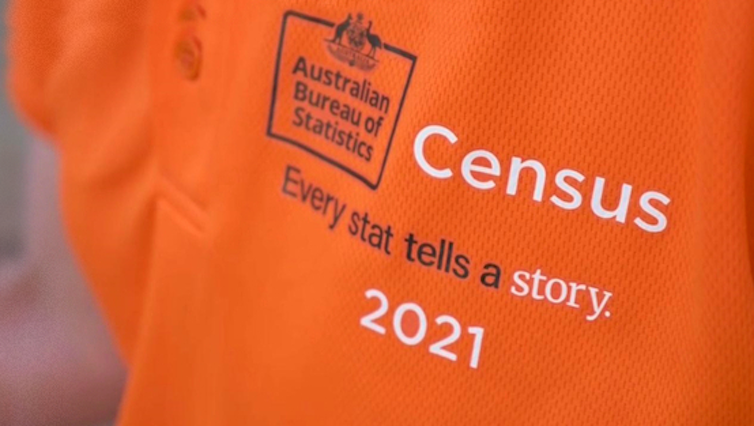
Census data to be released Tuesday shows Australia changing rapidly before COVID, gaining an extra one million residents from overseas in the past five years, almost all of them in the three years before borders were closed.
For the first time since the question has been asked in the census, more than half of Australia’s residents (51.5%) report being either born overseas or having an overseas-born parent.
More than one quarter of the one million new arrivals have come from India or Nepal.
The census shows so-called millennials (born between 1981 and 1995) are on the cusp of displacing baby boomers as Australia’s dominant generation.
Although the number of baby boomers (born between 1946 and 1965) has changed little, as a proportion of the population boomers have fallen from 25.4% in 2011 to 21.5%. Millennials have climbed from 20.4% to level pegging at 21.5%.
The changes are reflected in the answer to the question about religion, the only non-compulsory question in the census. Almost 40% of the population identified as having no religion, up from 30% in 2016, and 22% in 2011.
Whereas 47% of millennials identify as having no religion, only 31% of boomers fail to identify with a faith. Nearly 60% of boomers are Christian, compared to 30% of millennials.
The share of the population identifying as Christian has slipped from 52% to 44%. Other religions are growing, but remain small by comparison. Hinduism climbed from 1.9% of the population in 2016 to 2.7%. Islam climbed from 2.6% to 3.2%.
The Five-Yearly Snapshot
Conducted every five years since 1961, and before that less often from 1911, and asking questions of every Australian household, the census provides information about the ways society is changing that couldn’t be obtained in any other way.
In the past five years the number of people who use a language other than English at home has climbed 792,000 to more than 5.6 million. 852,000 Australian residents identify as not speaking English well or at all.
Mandarin remains the most common language other than English used at home, used by 685,300 people, followed by Arabic with 367,200 people.
The Real Value Is In The Detail
The real value of the census is in the locational details. The information released on Tuesday will identify locations with any characteristic that needs particular services, such as the areas with more people who identify as not speaking English well or at all. It will also show which parts of Australia are growing in population and which parts are shrinking.
The broad-brush information released on Monday showed the number of single-parent families had climbed past one million. The information released on Tuesday will identify the suburbs and towns in which they live.
The information released on Monday showed the overall proportion of Australians owning their homes was little changed. The information released on Tuesday will report those proportions by age group and city.

New Questions
Two new separate questions in the 2021 census ask about service in defence forces and long-term health conditions.
One quarter of veterans are aged 65-74, reflecting conscription during the Vietnam War.
More than two million Australians suffer long-term mental health conditions; more than two million suffer arthritis; and more than two million suffer asthma.
Tuesday’s figures will offer more detail on the locations of sufferers and details such as their income and occupations, as well as details such as whether those who’ve served in defence were conscripts, serving in Vietnam.
Saved From The Axe
Seven years ago the Australian Bureau of Statistics tried to axe the five-yearly census, making it 10-yearly - as in the United Kingdom and the United States - to save money.
The outcry from planners and researchers who relied on the census resulted in the bureau being given an extra A$250 million to ensure it continued.
Tuesday’s is the first of three census data releases. In October, the bureau will release information about education and employment and travel to work.
Early next year it will release location-specific socio-economic information and estimates of homelessness.![]()
Peter Martin, Visiting Fellow, Crawford School of Public Policy, Australian National University
This article is republished from The Conversation under a Creative Commons license. Read the original article.
Disclaimer: These articles are not intended to provide medical advice, diagnosis or treatment. Views expressed here do not necessarily reflect those of Pittwater Online News or its staff.